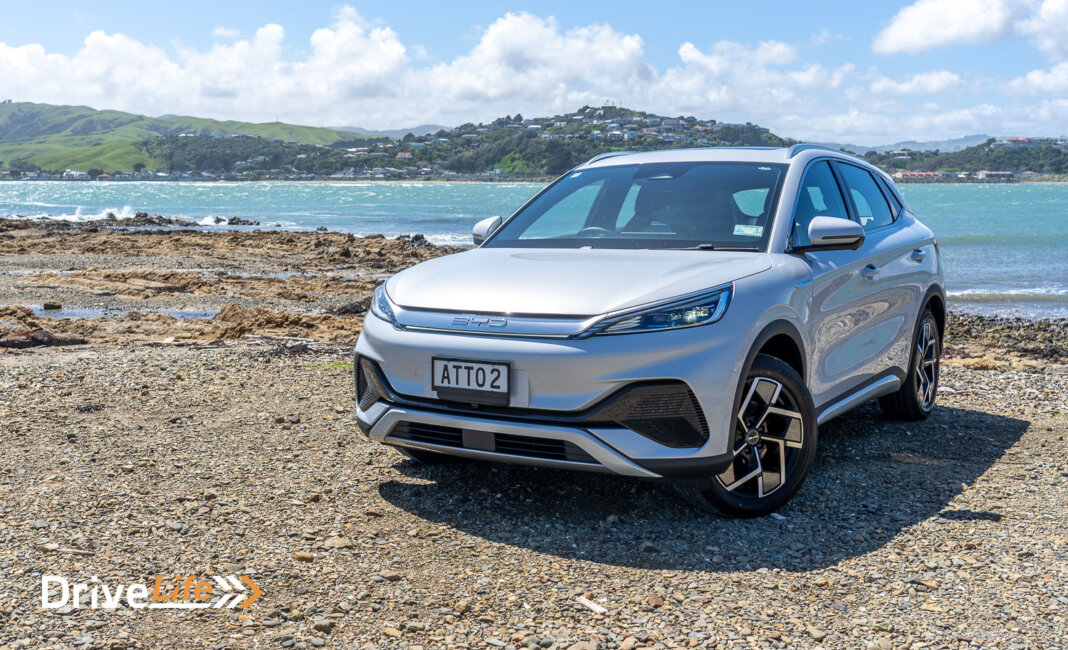In a short amount of time in our market, BYD (which stands for Build Your Dreams) has cemented itself both as a rival to the cheapest new EV you can buy (the MG ZS EV), and also other, more expensive and established brands.
We were sent the BYD Atto 3 to review, and after my week with the car, DriveLife motoring journalist Alistair Weekes will also get behind the wheel as the Atto 3 is included in the top-ten selection for New Zealand Car Of The Year.
Is the second cheapest new EV you can buy any good? Is its range, with BYD’s blade battery system, really better? More importantly, is it going to feel like a dream car? DriveLife spent 2 weeks and 800km behind the wheel to find out.
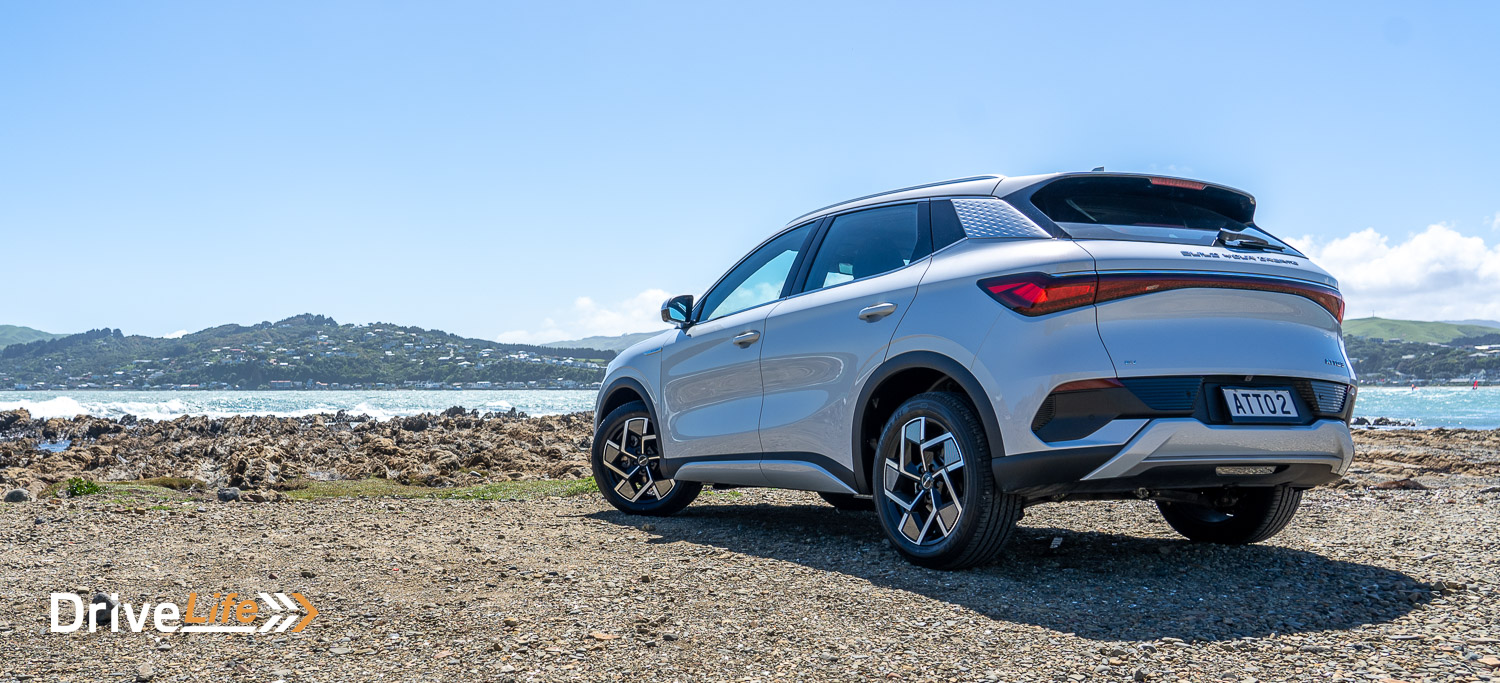
What We Like and Dislike About The 2022 BYD Atto 3 Extended 60kWh
| What we like | What we don’t like |
| Features for the price Range Space Technology Ease of driving Funky yet spacious interior Driving refinement Seat comfort Screen resolution Interior build quality | Some technical glitches in our test car Low automatic brake regeneration NFC needs improvements Fake alerts |
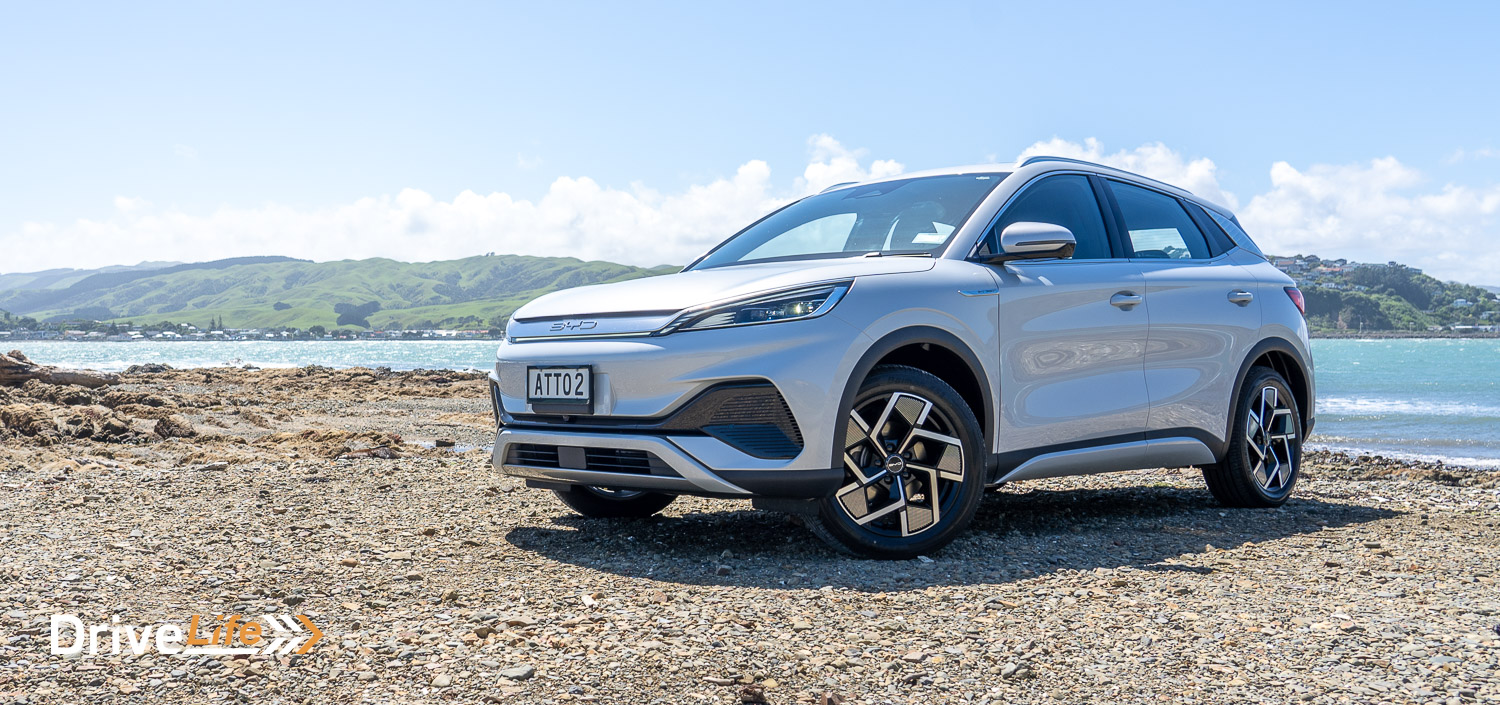
What’s In The 2022 BYD Atto 3 Range?
There’s essentially just one model available in New Zealand, but you can buy it as a Standard or Extended range. So the only difference is in battery size, with the Standard model coming with a 50kWh battery and the Extended (that we are reviewing) with a 60kWh battery pack.
The standard model has a WLTP rating of 345km and the Extended is listed at 420km.
2022 BYD Atto 3 Standard: $55,490
2022 BYD Atto 3 Extended: $59,990
We thought the MG ZS EV was well equipped for its price, but the BYD Atto 3 goes further. While you have to pay around $500 for the Vehicle-to-Load (V2L) adaptor for the MG ZS EV, it’s included in the price of the Atto 3. Then again, any colour paint is free for the MG ZS EV, but for the Atto 3, anything other than white is $750 extra.
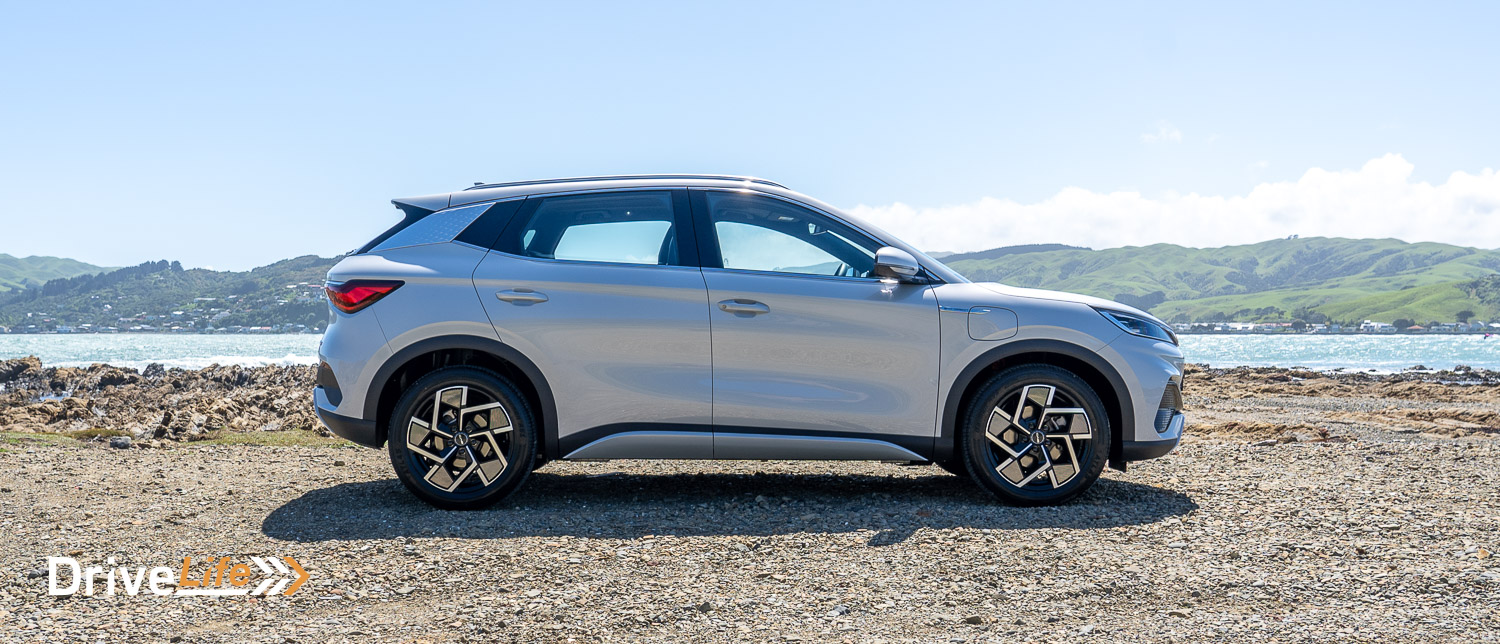
2022 BYD Atto 3 Standard Equipment Highlights
Safety and Security
- Front airbags – driver & front passenger
- Side airbags – driver & front passenger
- Side curtain airbags – front & rear
- Far-side airbags – driver
- Seat belt reminder – front & rear
- Tyre Pressure Monitoring System (TPMS)
- ISOFIX child restraint anchorage points (outer rear seats)
- Anti-Lock Braking System (ABS)
- Electric Parking Brake System (EPB)
- Electronic Stability Program (ESP)
- Traction Control System (TCS)
- Electronic Brake Force Distribution (EBD)
- Hill Descent Control (HDC)
- 360° view monitor
- Front 2 radars
- Rear 4 radars
- Auto hold
- Stop & Go Full Speed Adaptive Cruise Control (ACC-S&G)
- Automatic Emergency Braking System (AEB)
- Front Collision Warning (FCW)
- Rear Collision Warning (RCW)
- Blind Spot Monitoring (BSD)
- Door Open Warning (DOW)
- Lane Departure Warning (LDW)
- Lane Keeping Assist (LKA)
- Rear Cross Traffic Alert (RCTA)
- Rear Cross Traffic Brake (RCTB)
Exterior
- Panoramic sunroof with electric slide and anti-trap
- Electric unlock tailgate
- One-touch open/close tailgate
- Roof rails
- Electrically heated and adjustable exterior mirrors
- Electrically retractable exterior mirrors
Interior
- Steering wheel-mounted controls – audio, phone,
- ACC and multi-function display
- 5″ digital instrument panel
- Digital Video Recorder (DVR)
- Synthetic leather seat
- Centre console storage compartment
- 60/40 split fold rear seats
- 6-way power adjustment – driver seat
- 4-way power adjustment – front passenger seat
BYD DiLink Intelligent Connection System
- FM & DAB radio
- Bluetooth phone connectivity and audio streaming
- 12.8″ intelligent rotating touchscreen
- Dirac HD sound, 8 speakers
- Apple CarPlay and Android Auto (available in Q4 2022)
- BYD DiLink Intelligent Connection System (available in Q4 2022)
- USB – C port × 1 + USB – A port × 1, Centre console
- USB – C port × 1 + USB – A port ×1, Rear
Light
- LED headlight
- Follow me home headlight
- High Beam Assist (HMA)
- LED daytime running light
- LED rear light
- Multi-color gradient ambient lighting
- Multi-color gradient ambient lighting with music rhythm (door handle)
- LED front reading light
- LED rear side reading light
- Luggage compartment light
Comfort & Convenience
- Wireless phone charging
- Keyless entry and start
You can pick from one of four colours for your Atto 3, with only Ski White at no charge. Parkour Red, Surf Blue or Boulder Grey will cost an extra $750.
For a full list of specs and options available for the 2022 BYD Atto 3 Extended head to the BYD New Zealand website.
How Does The 2022 BYD Atto 3 Extended 60kWh Compare To Its Competition?
All prices below exclude the refund or additional cost of the New Zealand Clean Car Programme.
| Make/ Model | Battery Capacity kW-hr | Power/ Torque kW/Nm | 0-100km/h seconds | Range (WLTP) | Boot Space, litres | Price (excl CCP) |
| Mazda MX-30 EV | 35.5 | 107/271 | NA | 199 | 341 | $74,990 |
| Hyundai Kona EV | 39 | 100/395 | NA | 305 | 332 | $69,990 |
| BYD Atto 3 Extended | 60 | 150/310 | 7.3 | 420 | 440 | $59,990 |
| MG ZS EV | 50.3 | 130/280 | 8.2 | 320 | 359 | $53,990 |
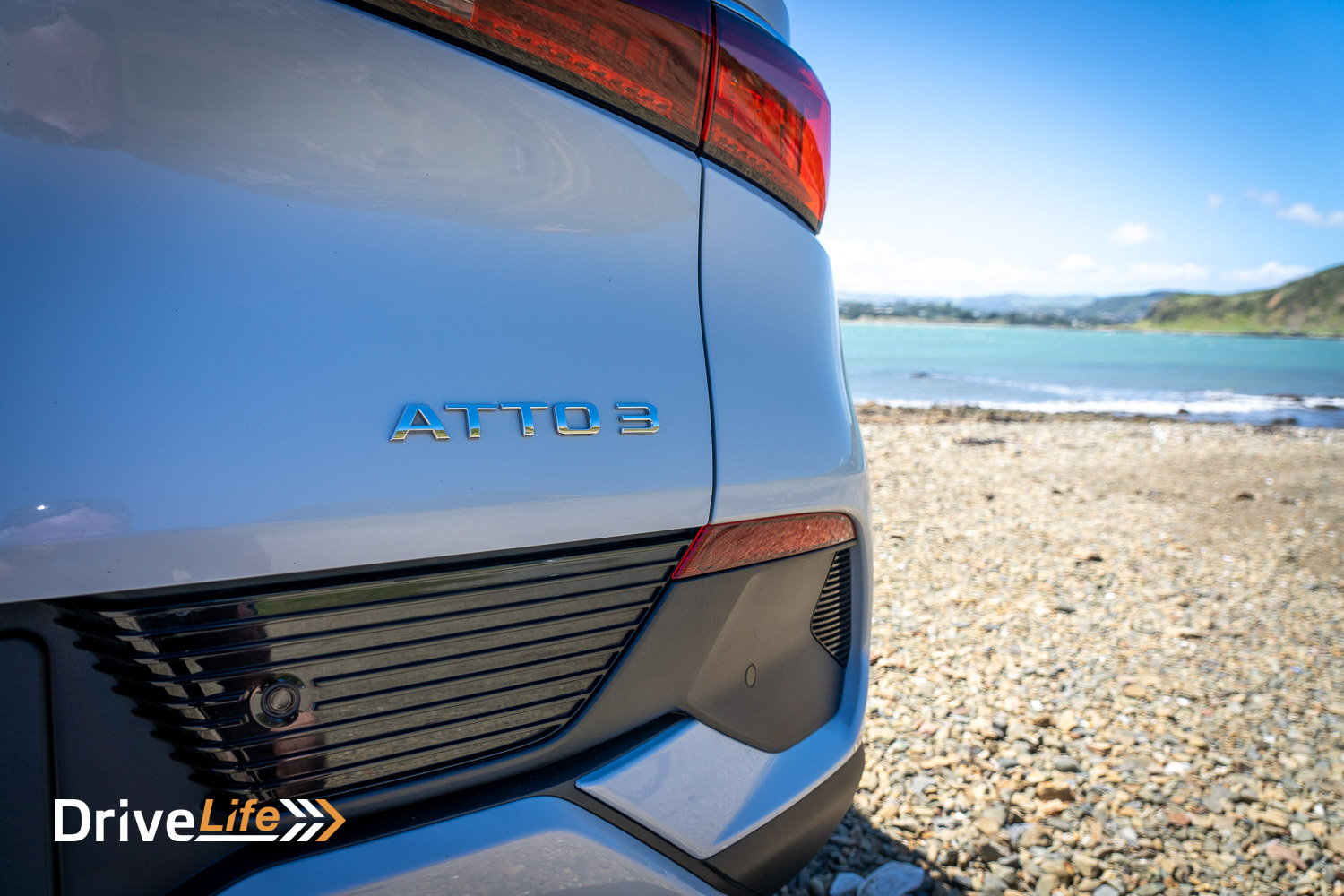
First Impressions Of The 2022 BYD Atto 3 Extended 60kWh
The Atto3 is a smart-looking SUV. The lines are nice, nothing is offensive and BYD has done very well. The full-width light bar at the front looks excellent when the lights are on, and there’s also a full-width light bar across the rear of the car.
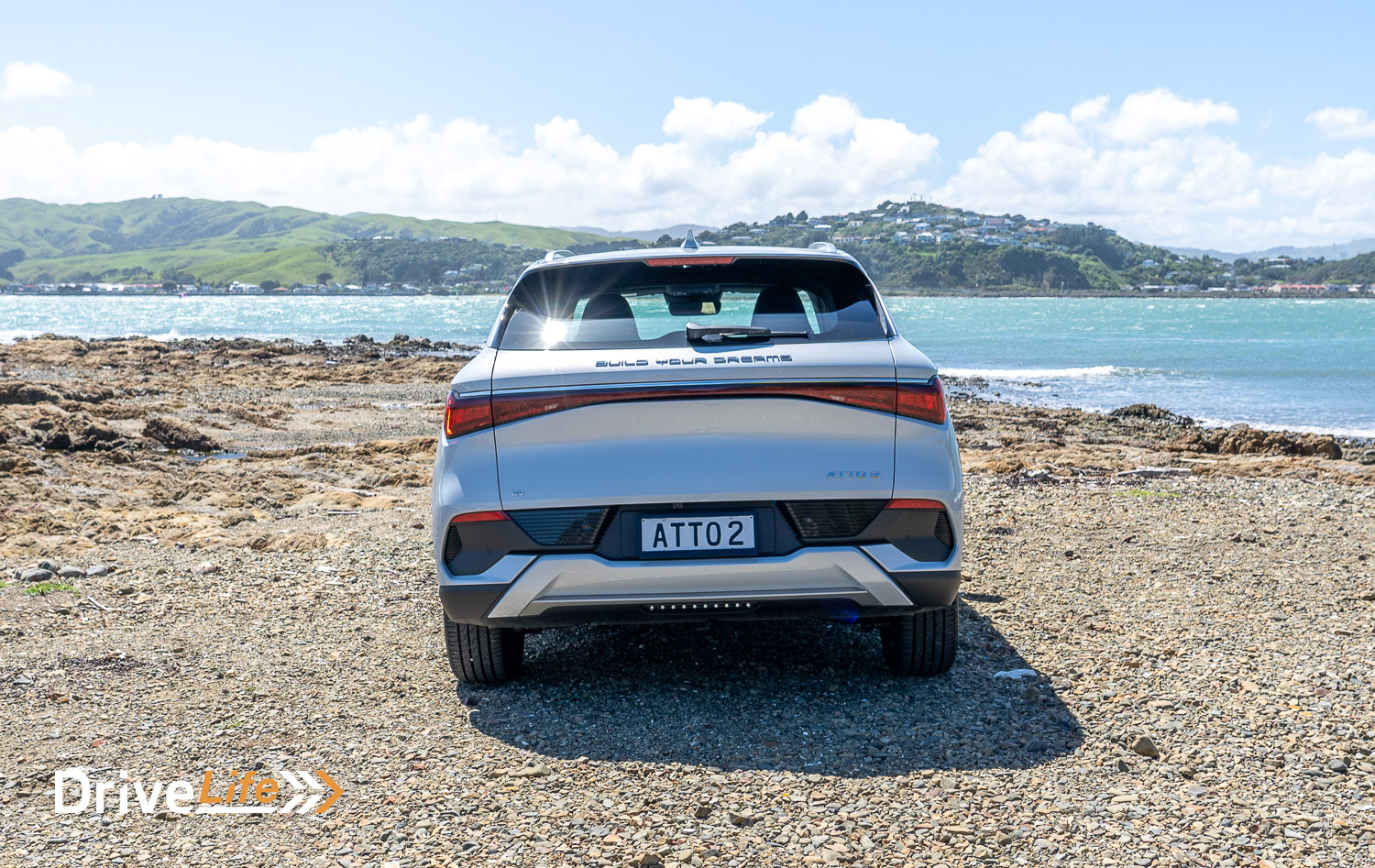
While some cars we’ve tested lately have had curious wheel designs (I’m being polite here, and thinking of the Nissan Leaf we recently reviewed), the Atto 3’s wheels are excellent.
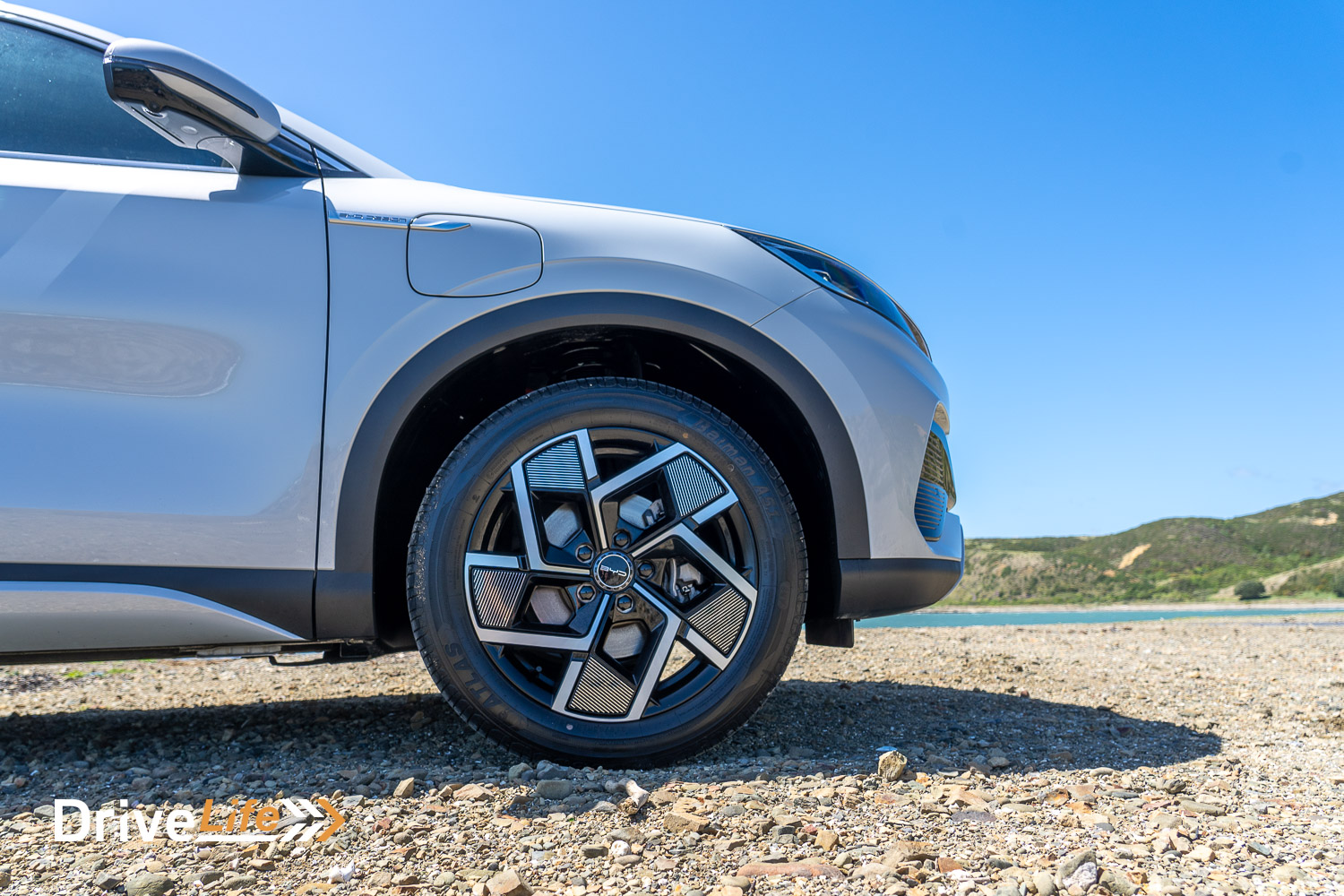
The scalloping on the sides of the car, along with that high swage line that leads to the taillights is nicely done; modern, current and crisp.
For me, the biggest drawback of the Atto 3’s design is that badging on the boot; right across the tailgate are the words ‘Build Your Dream”, each in its own chromed letter and separate, so if you wanted them gone, it’s not just one badge, you’d have to pry off each individual letter. I wonder how many potential buyers ask the car dealer how much it costs to remove that badging…
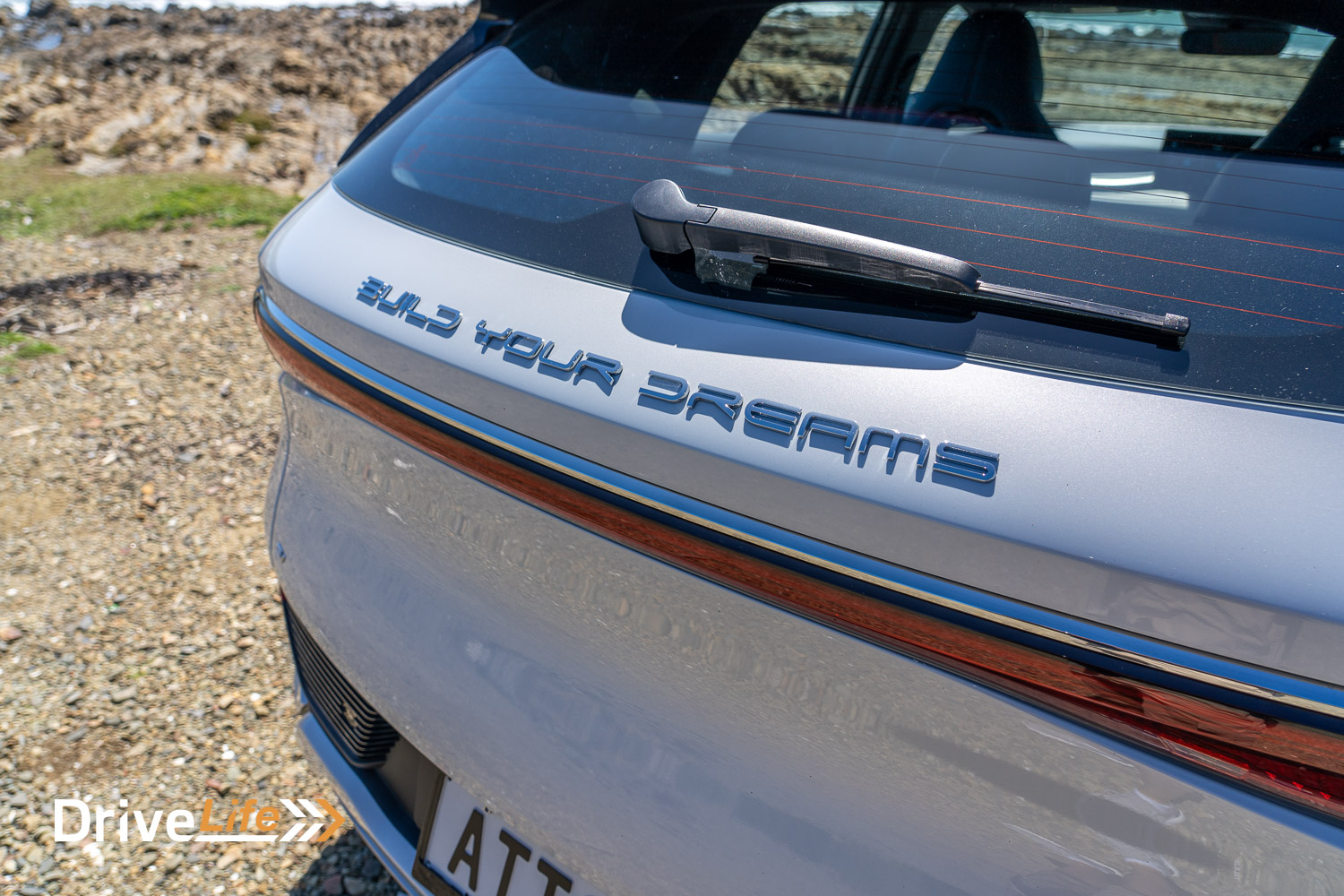
What’s The Interior Like In The 2022 BYD Atto 3 Extended 60kWh?
It’s going to be hard not to compare the interior of the Atto 3 to the MG ZS EV that I recently drove 600km from Auckland to Wellington. They are both Chinese-built EVs, are both at the lowest pricing in the market for a new EV, and are both small-medium, 5-door SUVs.
While the interiors on those two cars are quite different, there is an attempt to make sure the cars do not feel cheap, or that interior design was left off the process to simply have an EV to sell. Each model has a feeling of being upmarket (markedly so for the MG) and there many of my passengers could not believe that the Atto 3 was the second cheapest new EV you can buy here.
There are lots of reasons for that view. Some include the dashboard; it’s very Tesla-ish in the way that there are no buttons on it at all, with most items being controlled by voice, or by the centre screen.
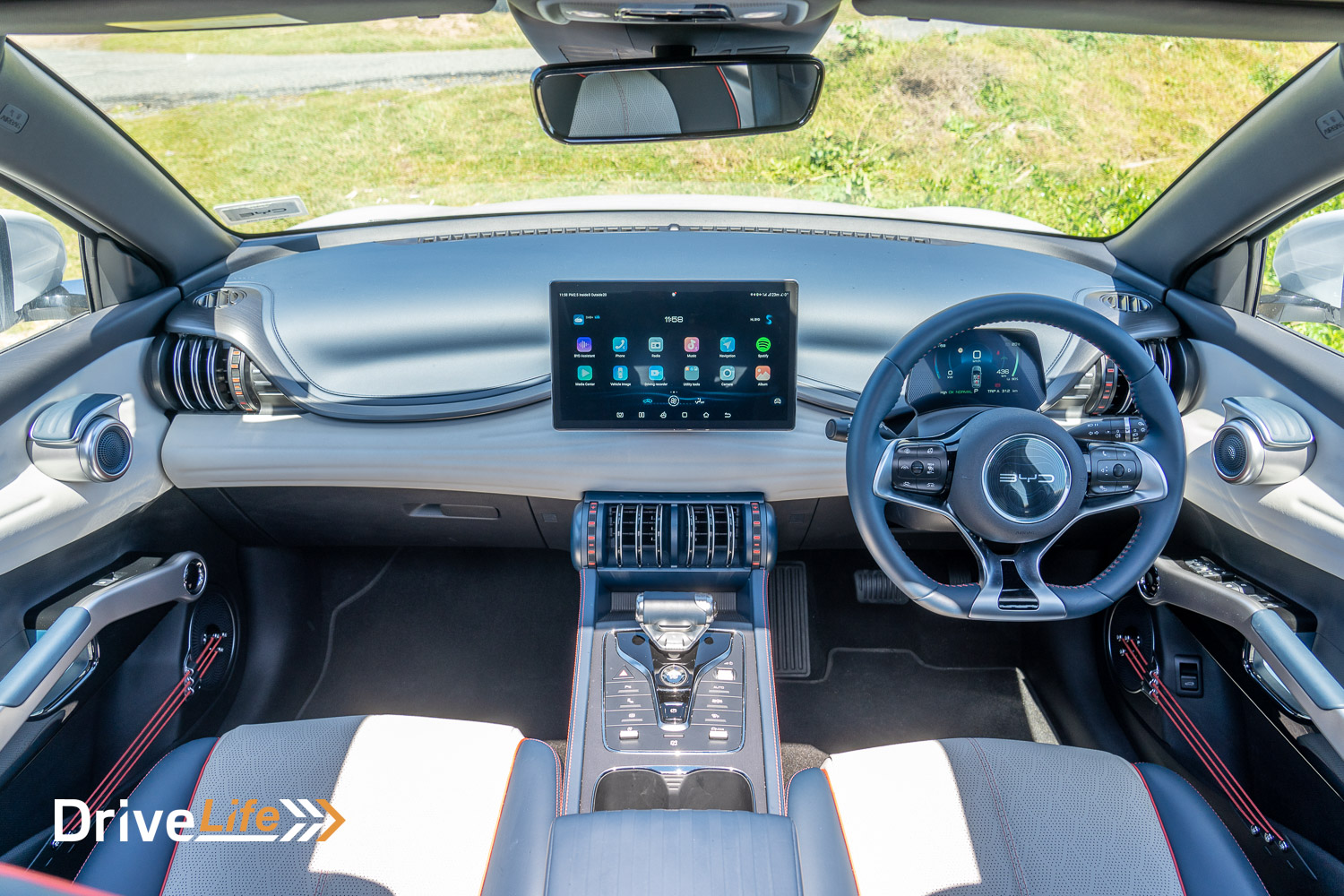
Then there’s that centre screen. It’s 12.8” across, so one of the biggest you can get, and it also rotates between landscape and portrait mode, either by a soft button on the screen or by a button on the steering wheel. It looks so cool and will certainly blow your passenger’s minds. The clarity of the screen belies the car’s price too; the resolution is excellent, including the 360-degree camera system.
The seats exude a quality that’s not expected. Again, it was the same in the MG ZS EV. The Atto 3’s seats look fantastic, with blue and cream leather, perforations in the centre panel and electric adjustment for both driver and passenger. A shame they have no lumbar adjustment at all (again, the same as the ZS EV) but they look expensive with red stitching and red piping. The seats are one piece, something we see are seeing more of, but this does make your rear-seat passengers feel a little more closed in.
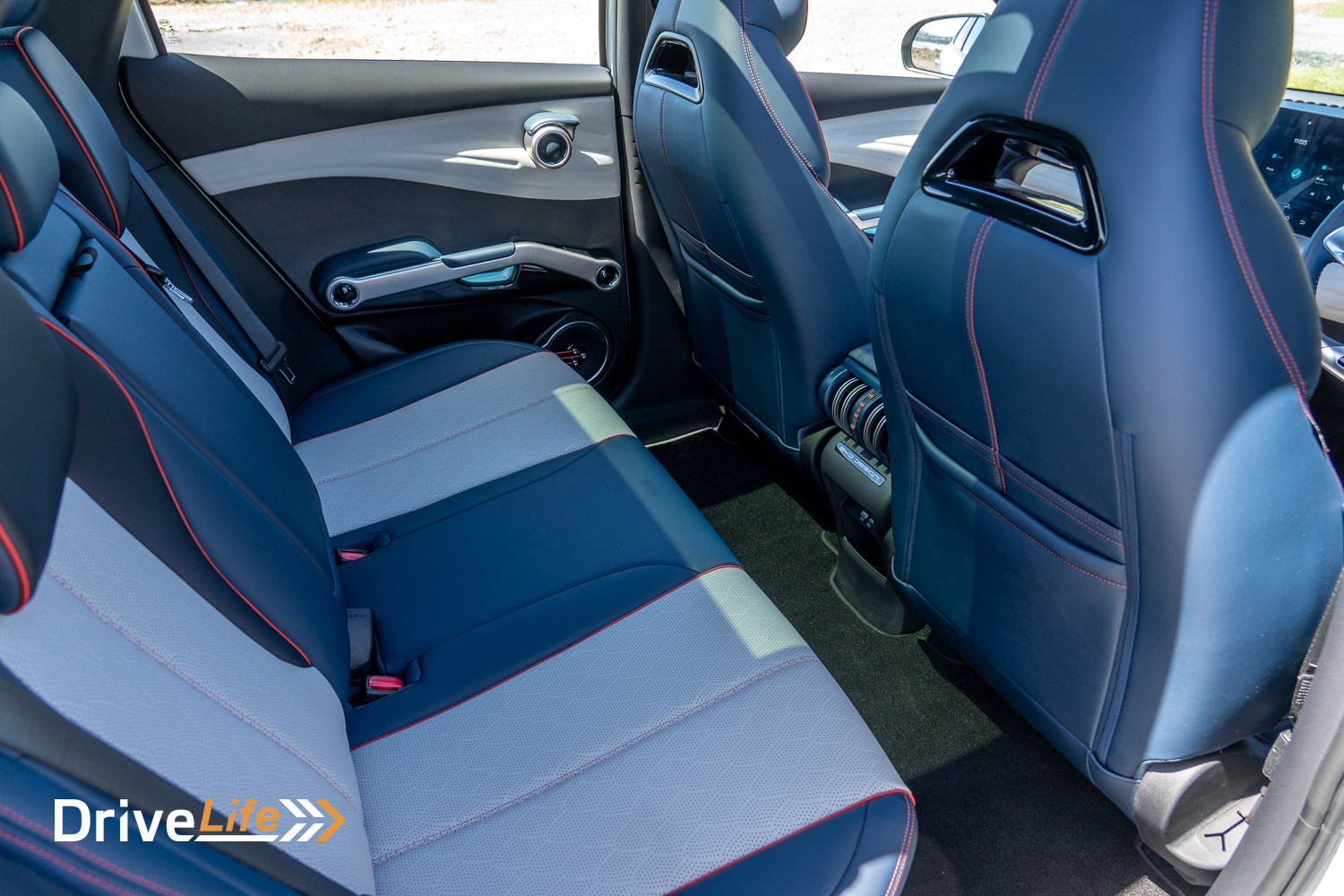
That red stitching is carried across to the centre console and steering wheel. Instead of sticking with boring and dark black, BYD has finished the interior with a mix of blues, creams and reds to make it far more inviting as well as lighter and brighter. I love it. That steering wheel has a flat bottom for that sporty touch and feels great.
There’s a huge panoramic electric sunroof, complete with an electric sunshade. I like that if you lock the car, the electric sunshade closes automatically to help keep the sun from warming up the interior. That’s a nice touch.
There are some quirks inside the Atto 3, I believe the main one being the “banjo” (my terminology) strings on each door. The Atto 3’s doors all have fat cords along the base of the door to help keep your stuff in place inside the door pockets, and each cord is different in length, so you can get a tune going as you drive. I kid you not. I can see Tik Tok users starting something up here, some sort of Atto 3 Banjo Challenge.
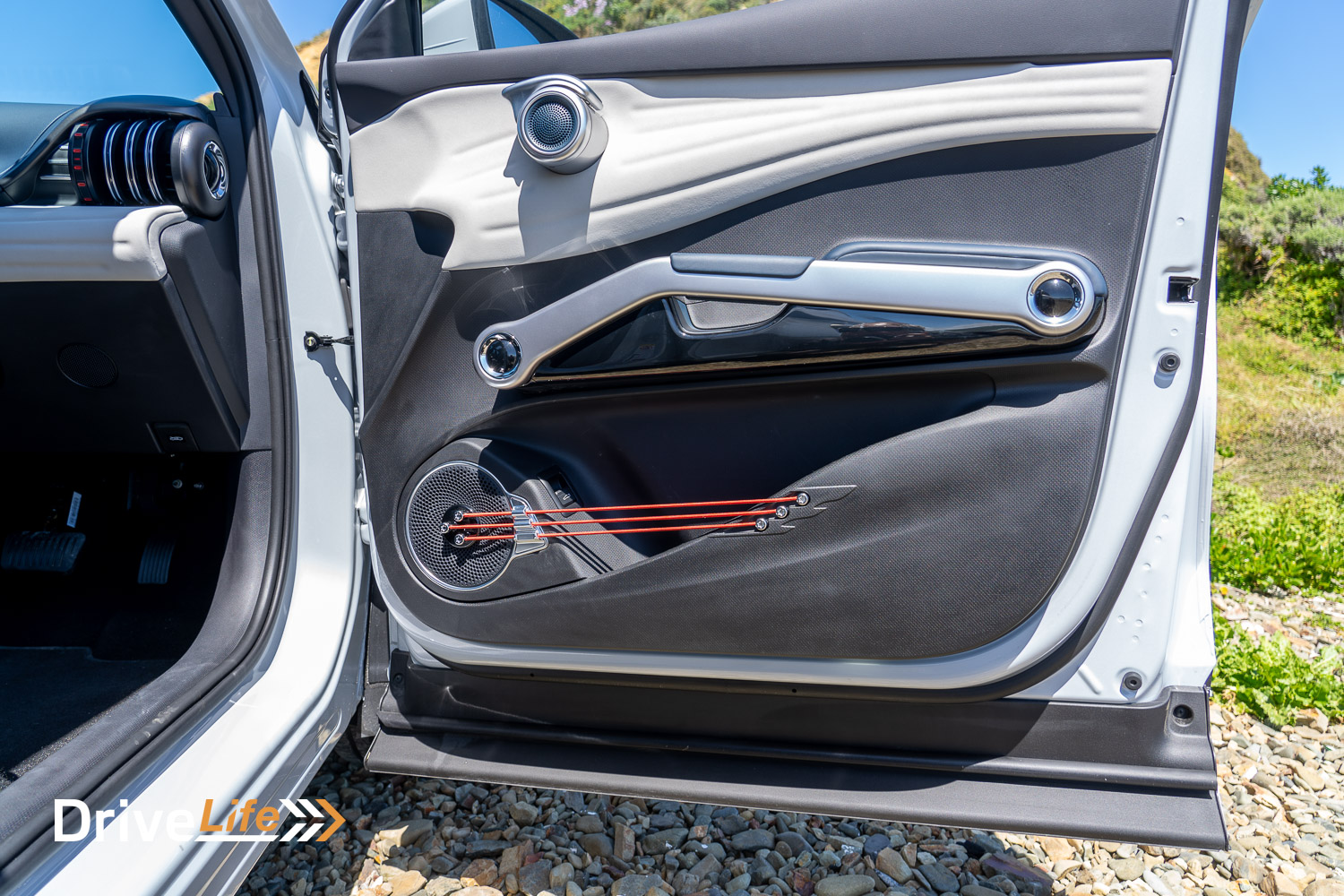
Another quirk, on a lower level, is the door handles. They’re combined with tweeters on the door, and almost do not look like a door handle. I only had one passenger who didn’t click to this, while all others’ hands naturally fell to the door handle and pulled it backwards. I wouldn’t say this was the safest design, as you need to hold the door with your other hand to stop it swinging open into traffic, but it’s still quite cool and funky.
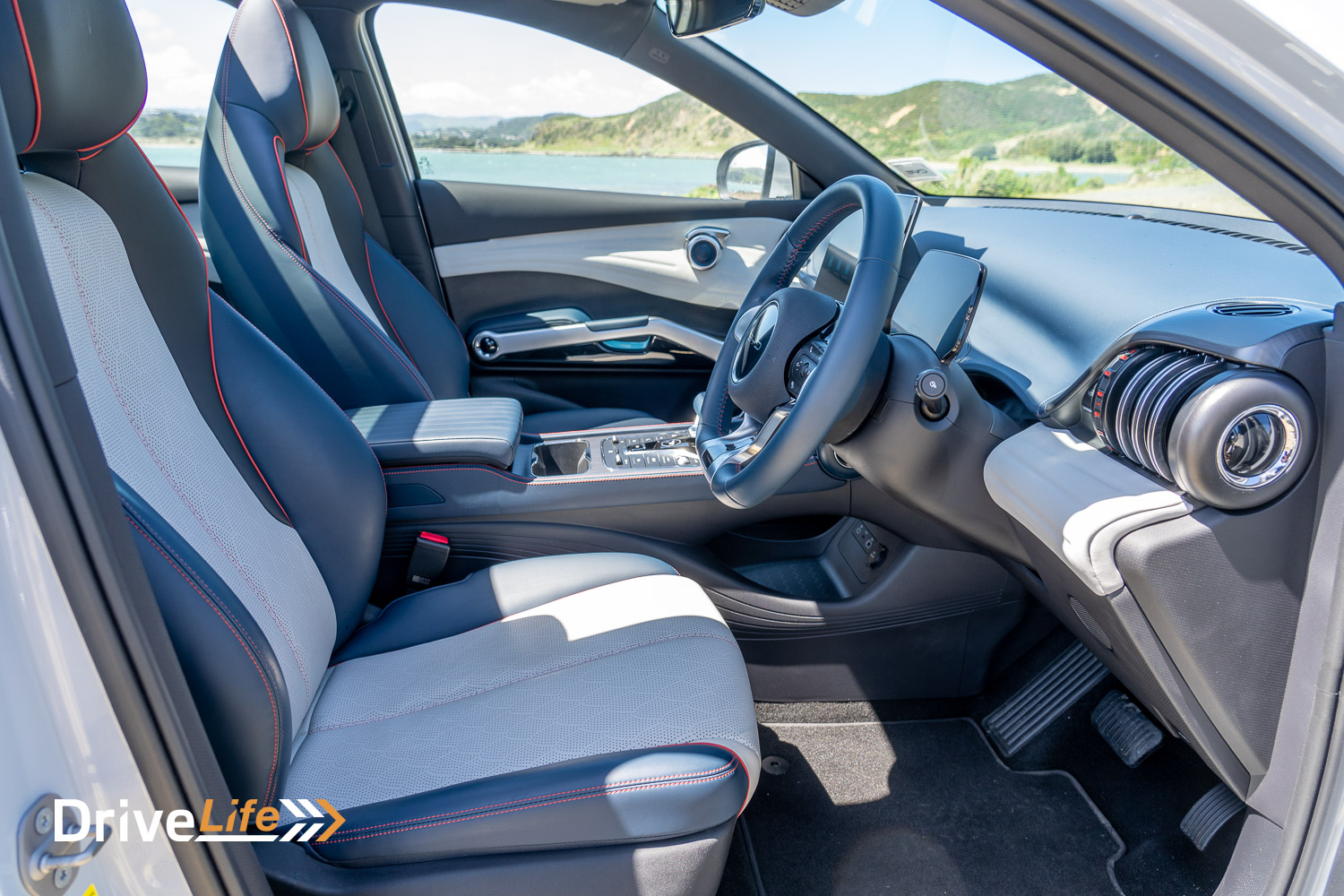
If there were one more comparison with the MG ZS EV, it would be the aircon vents. They look pretty funky too, almost like a CD stacker. While the lower vents feel nice and feel like quality, the upper dashboard vents feel loose and floppy, like they aren’t going to last a long time. I don’t know why, by the MG ZS EV was exactly like this as well. Not sure what’s up with that. I’m sure the vents will go the distance, but they don’t feel great to move.
The rest of the interior is nicely put together, with no unexpected gaps and with the touch points from the driver’s seat being soft materials. That cream finish on the front dash and on the doors is padded vinyl – plush and squishy.
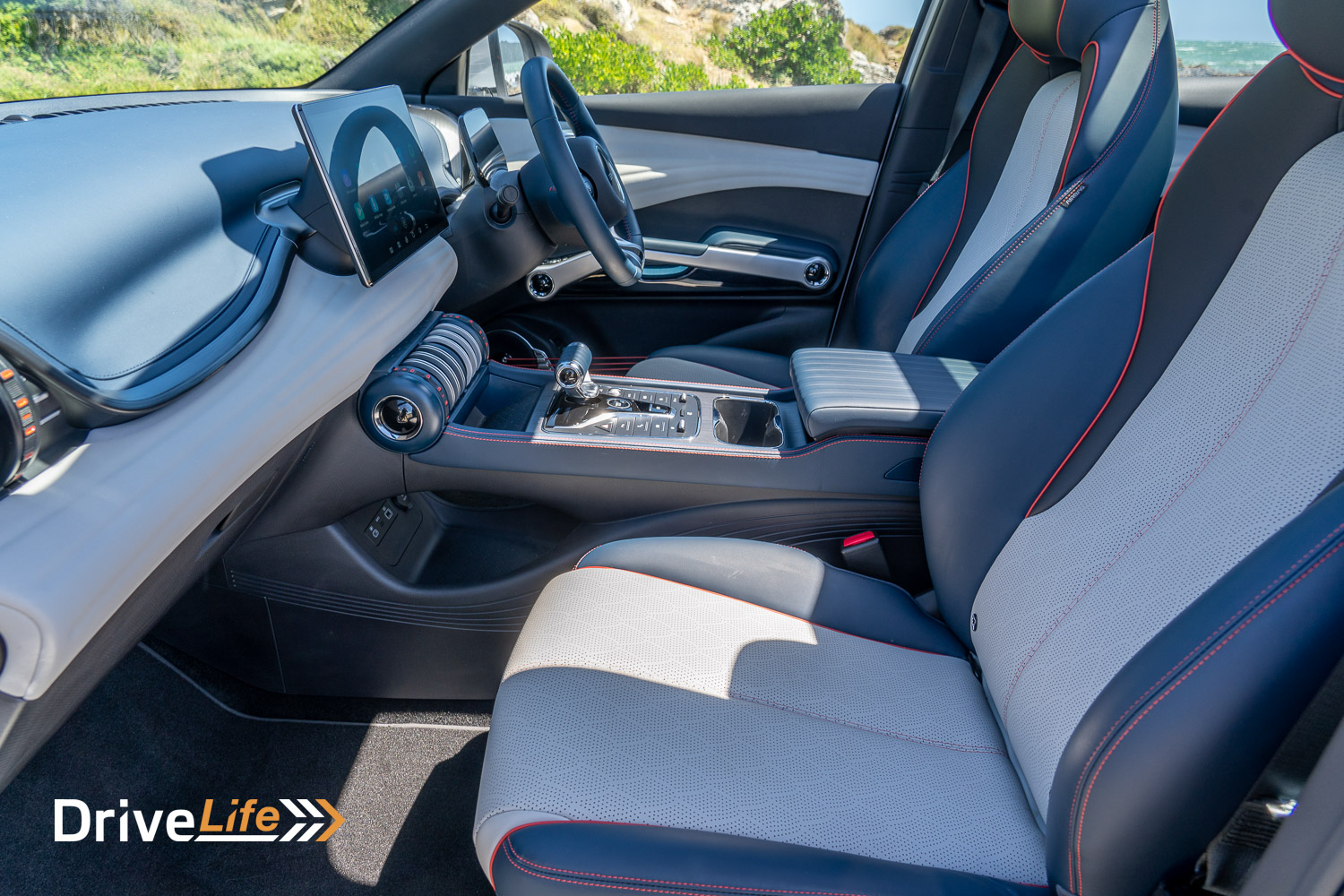
Storage shouldn’t be an issue in an EV since they generally have a flat floor, and the Atto 3 makes the most of this. The glovebox is a good size, and the centre console cubby is deep, going all the way to the floor. At the front of the centre console is a lower storage area, large in size and this contains a 12-volt socket, and single USB-A and USB-C ports.
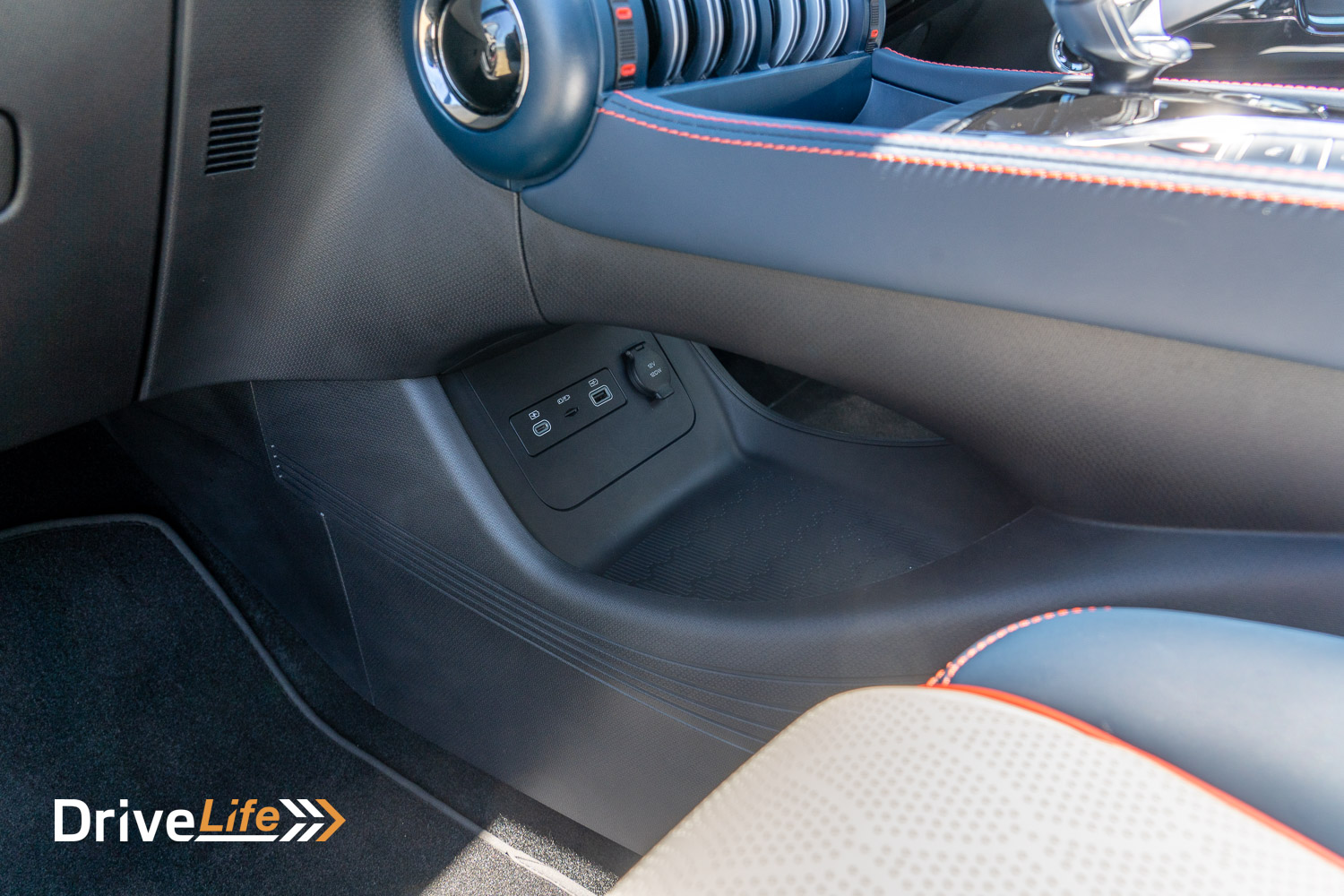
There’s a Qi wireless charging pad in front of the gear shifter, it’s nicely tilted forward to hold your phone in place, and reduce the temptation to look at it. While the Atto 3 we tested doesn’t have Apple CarPlay or Android Auto, this is coming to all Atto 3s in an over-the-air update in December 2022.
Rear-seat passengers also get USB-A and C ports and aircon vents at the rear of the centre console. On the back of each front seat are two cellphone pockets (each side) so your phone doesn’t get lost on the floor, for your rear-seat passengers. There’s plenty of room in the rear, with reasonable headroom. Unlike the Nissan Leaf we recently tested, the Atto 3 has a completely flat floor in the rear.
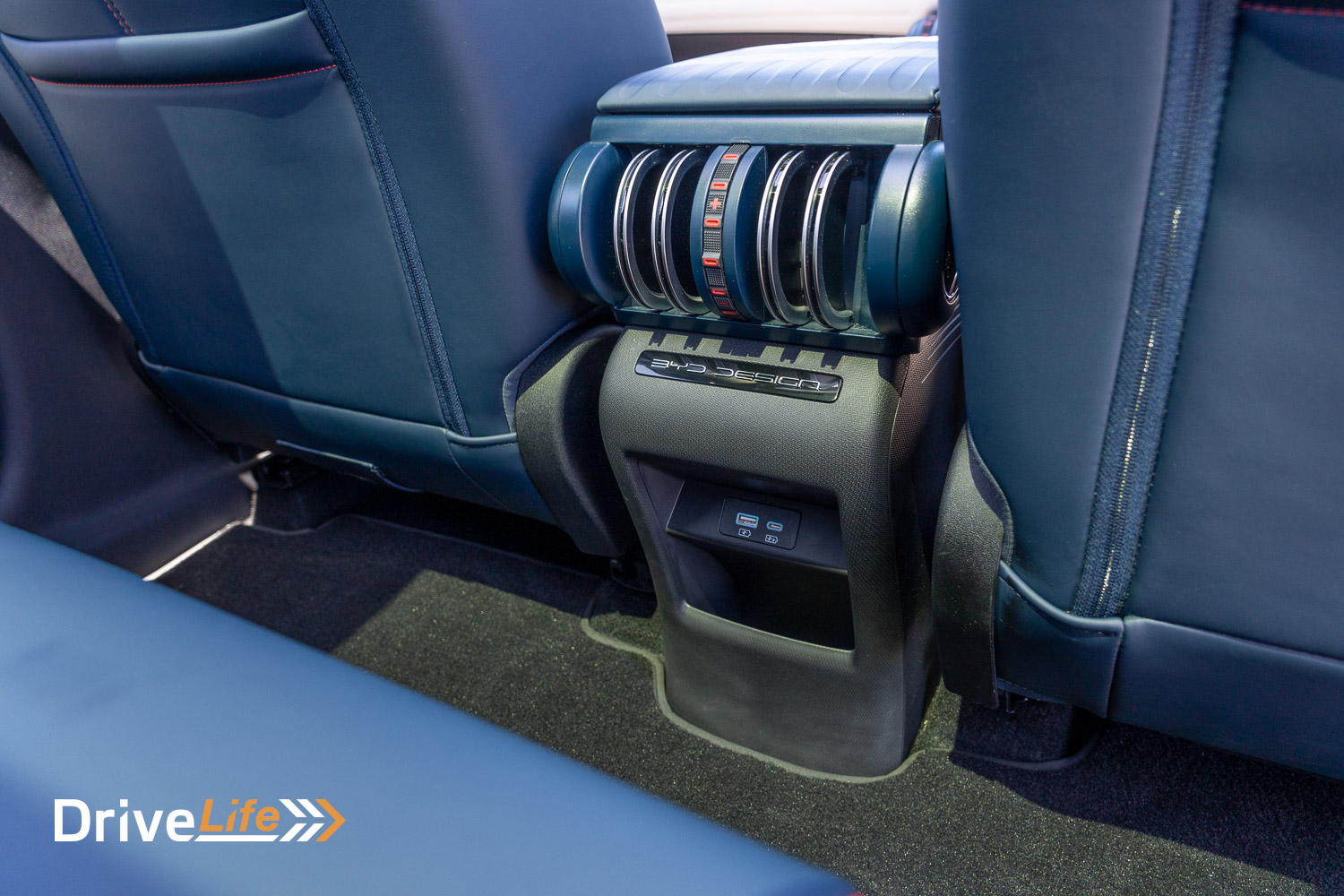
The boot is bordering on large in size, at 440 litres. This is only slightly smaller than the Kia EV6 we recently reviewed, and at 1,340 litres, the Atto 3 has a larger boot than the EV6 when the seats are folded flat. It has a double-layer floor, so you can lift the floor up and move it lower to give yourself more height for your stuff. With the floor height at the normal level, there’s around 200mm of depth under it to fit other junk. Under the floor is the tyre repair kit, a cable for when charging at a station that isn’t cabled (‘tethered’) and the 230-volt charger to use when you aren’t fast charging, or don’t have a wall charger at home. The 230-volt charger our test car was supplied with was faulty, but BYD switched this for a new one and that worked perfectly.
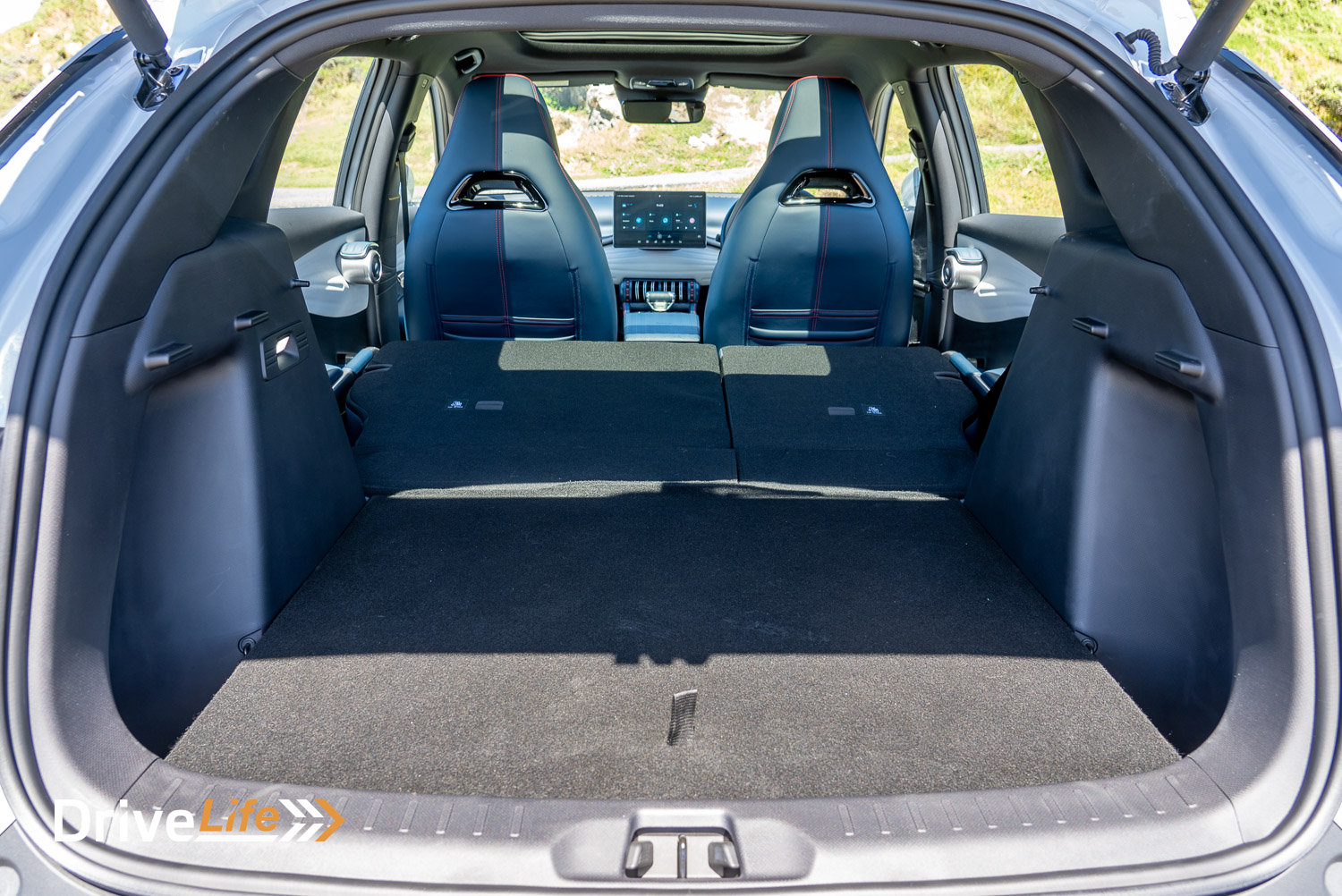
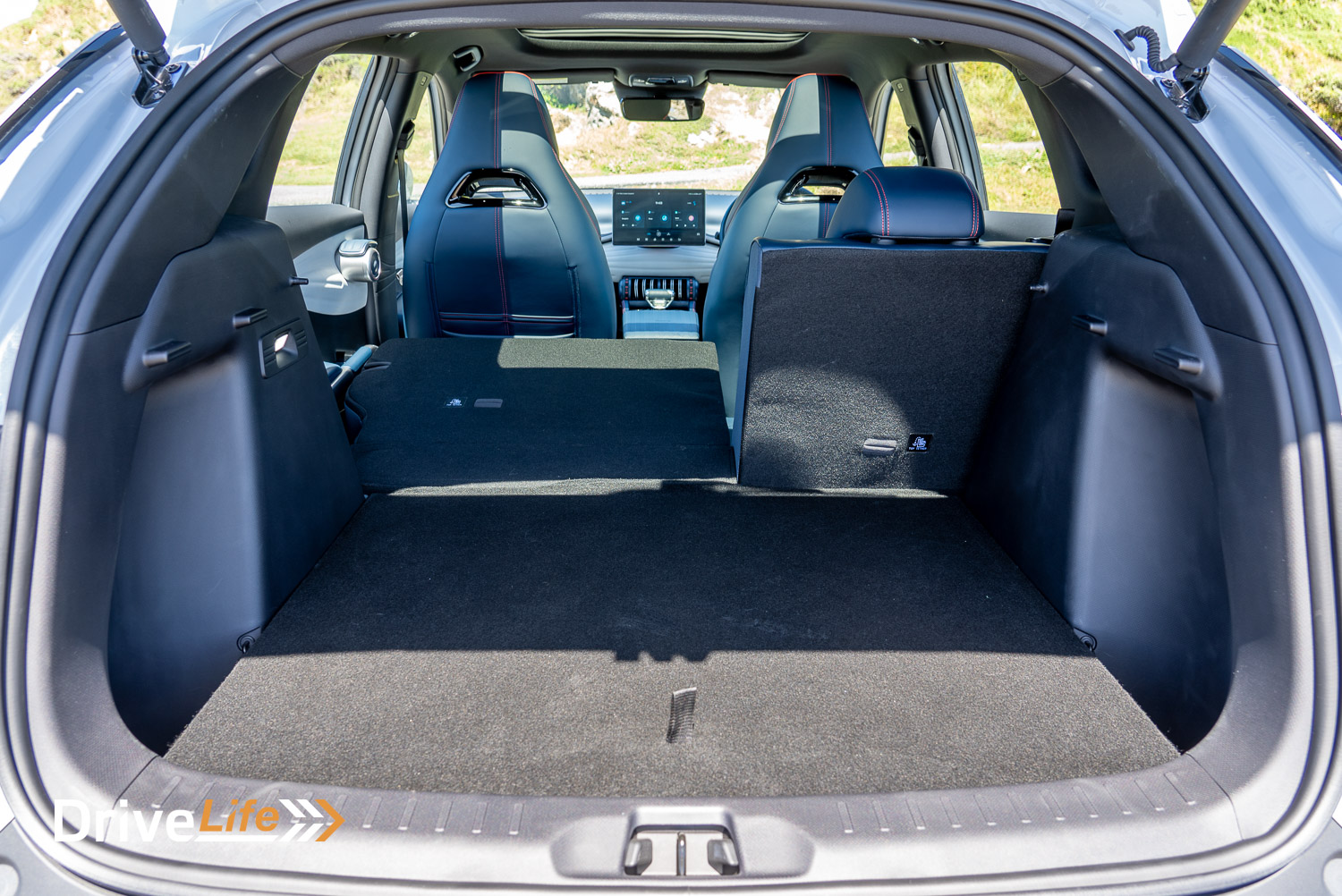
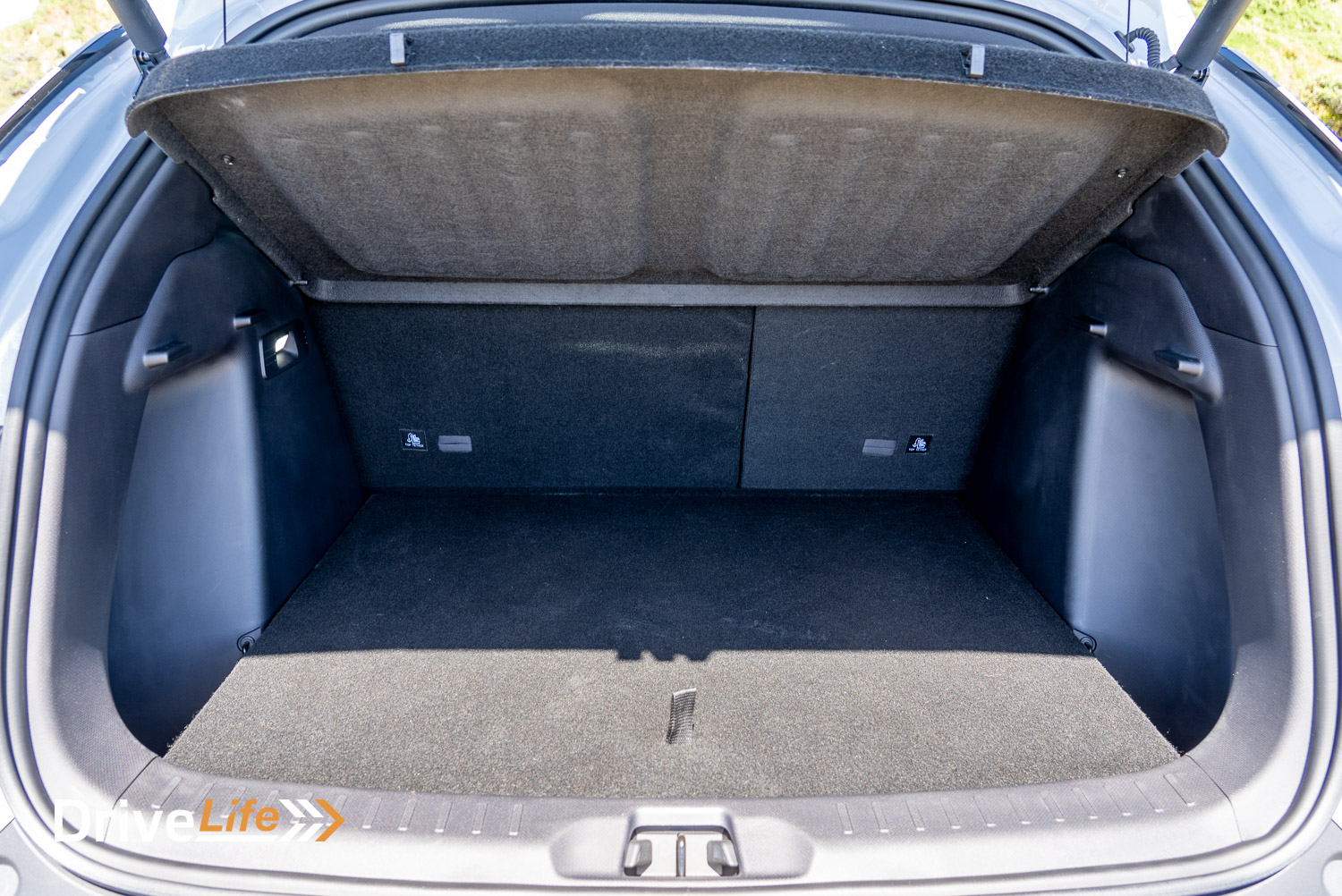
At each side of the boot are deep bins, big enough to hold that 230-volt charger in its bag if you wanted to keep it there.
Also under the boot floor is where you’ll find the Vehicle-to-Load (V2L) adaptor. Currently, that’s a cord that plugs into the EV charging port, and on the end of that cord is a household power multi-box. This is changing in December of this year when BYD will be supplying a ‘proper’ V2L adaptor that will be splash-proof. Unlike MG, the V2L adaptor is free with all Atto 3s. BYD has stated that all 1,500 previous purchasers of an Atto 3 will receive a new V2L adaptor when they arrive.
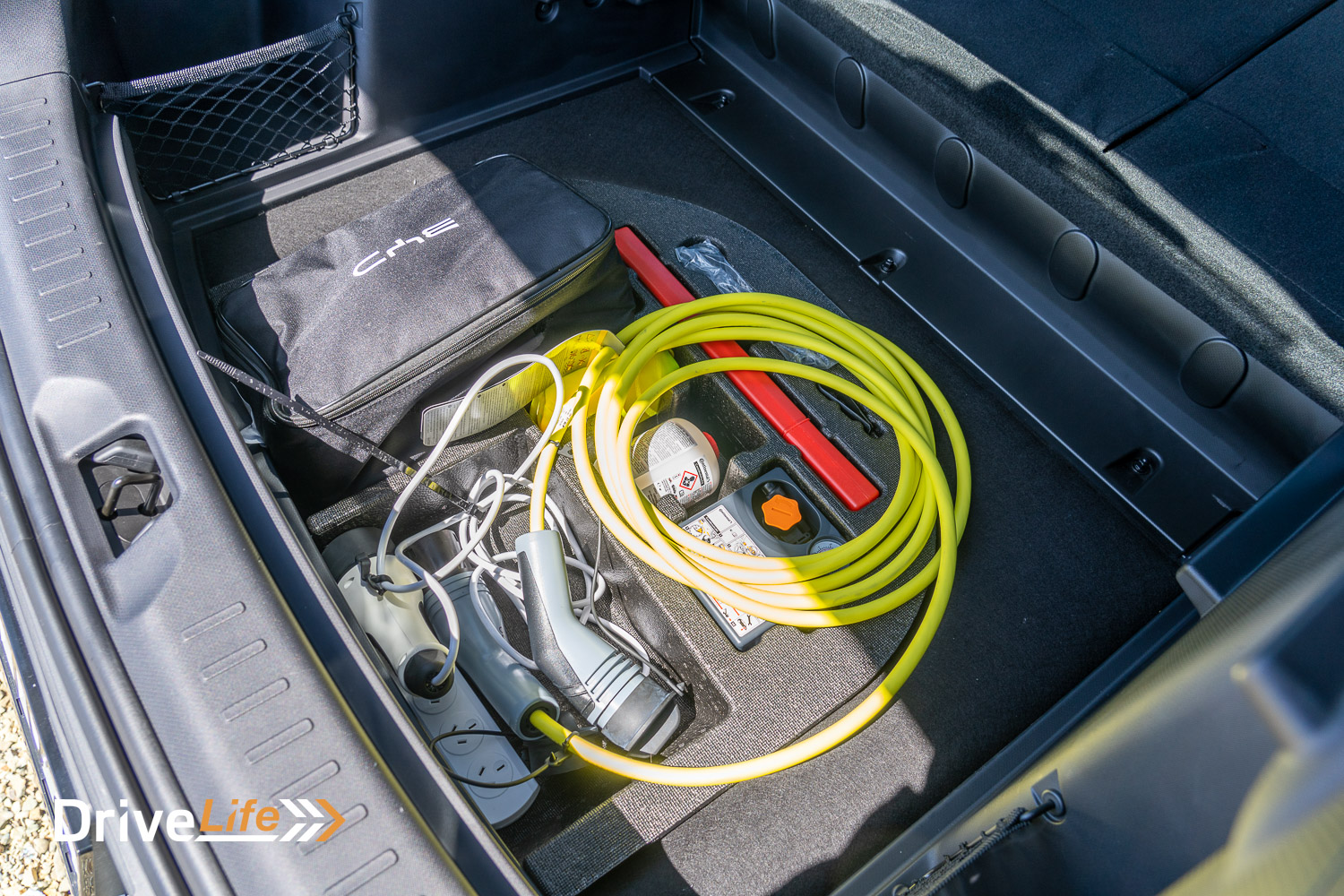
What’s The 2022 BYD Atto 3 Extended 60kWh Like To Drive?
I know the Atto 3’s claim to fame is its long range, but the 487km range showing on picking up our test car seemed fairly keen. I was advised the number would be more around the WLTP rating of 420km, so with the challenge thrown down, I’d be running the Atto 3 as close as possible to 0% battery charge to see how far I really get from 100% charged.
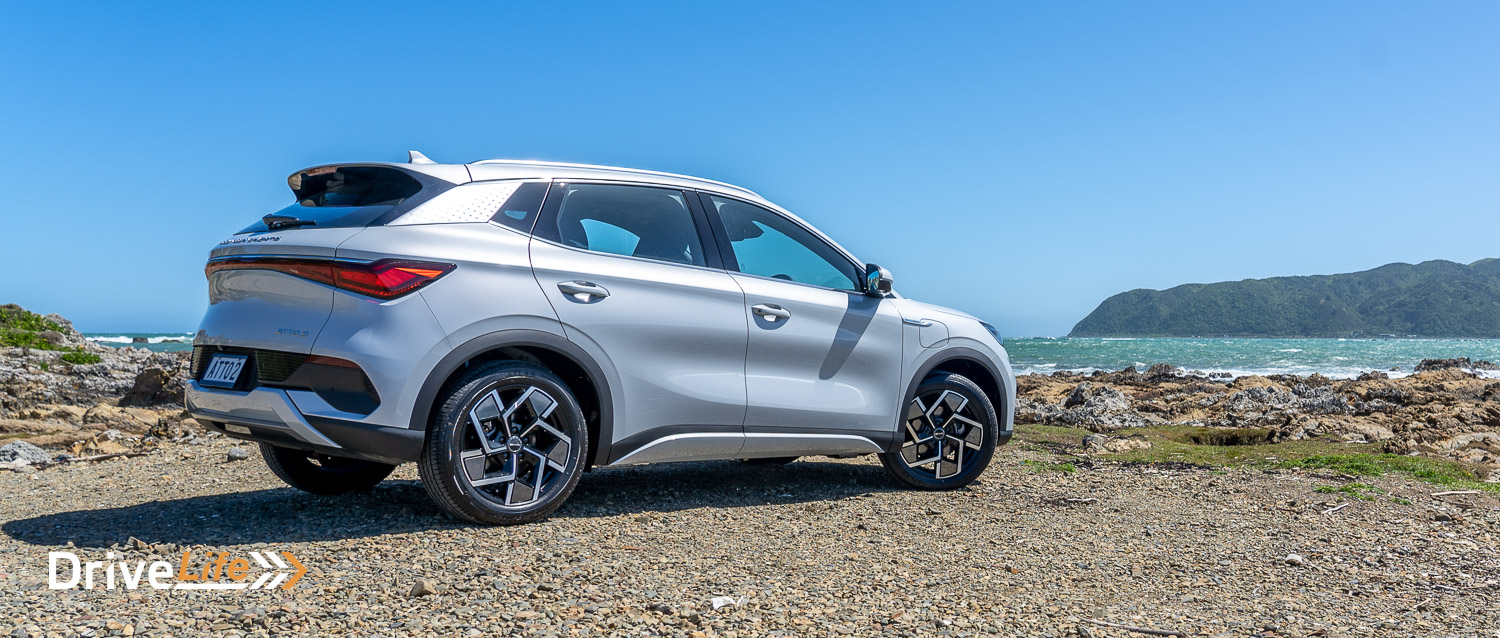
BYD makes a lot of noise about its blade battery system, and by all accounts, it is better. It’s less susceptible to getting hot (and the extremely remote possibility of a fire), is better at space utilisation, and has a better range – or so they claim. Let’s see how we go.
Cruising around Wellington in my first drive in a BYD product, it seems quite refined. It feels good, and it feels easy to drive. Visibility is generally excellent, and the crispness and high resolution of that centre display really comes into its own as it turns on when some other car (or person walking too close) comes near you. While this may be the second cheapest new EV you can buy in New Zealand, the specs are high and that 360-degree camera system is as good as in a Tesla or high-end Euro car.
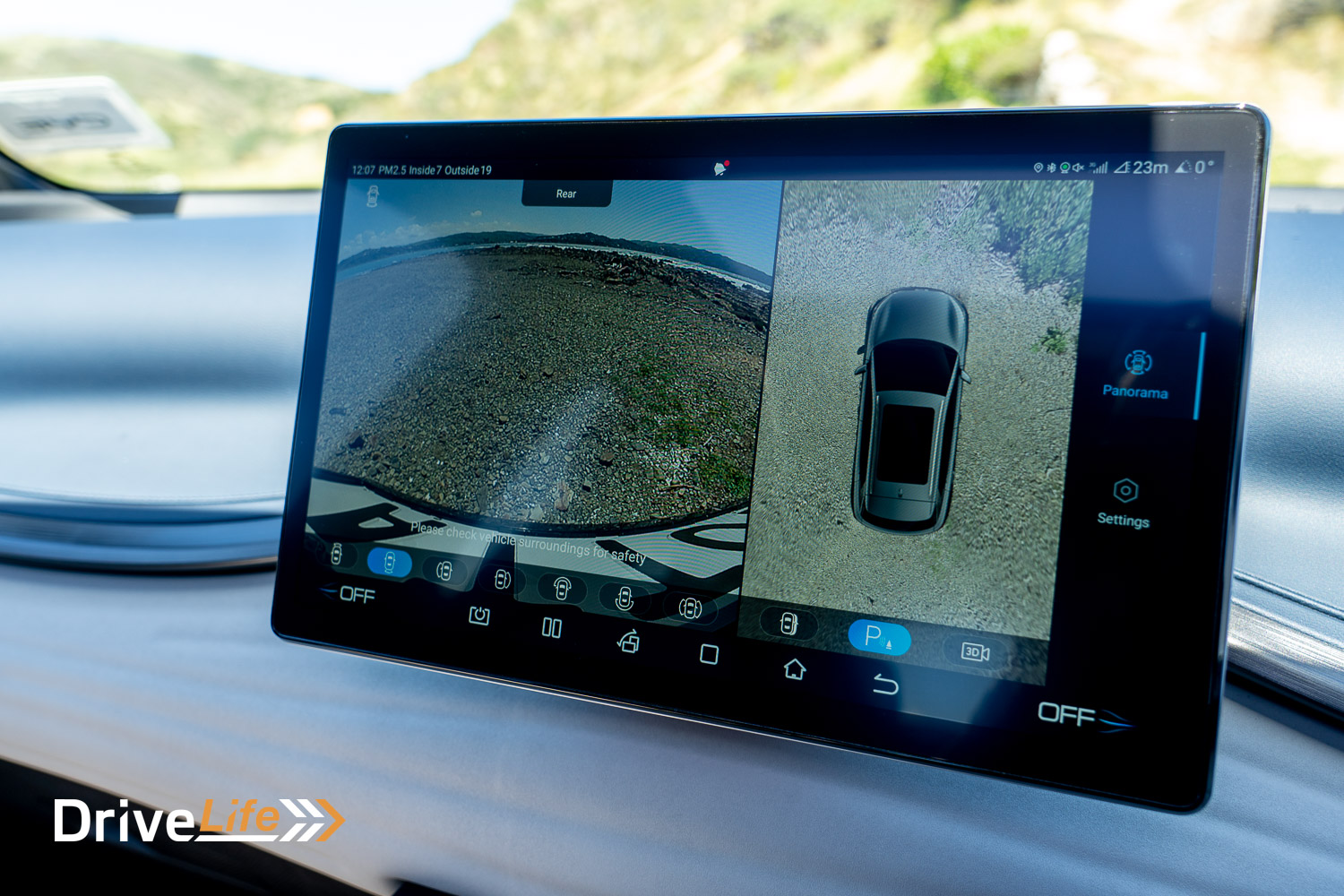
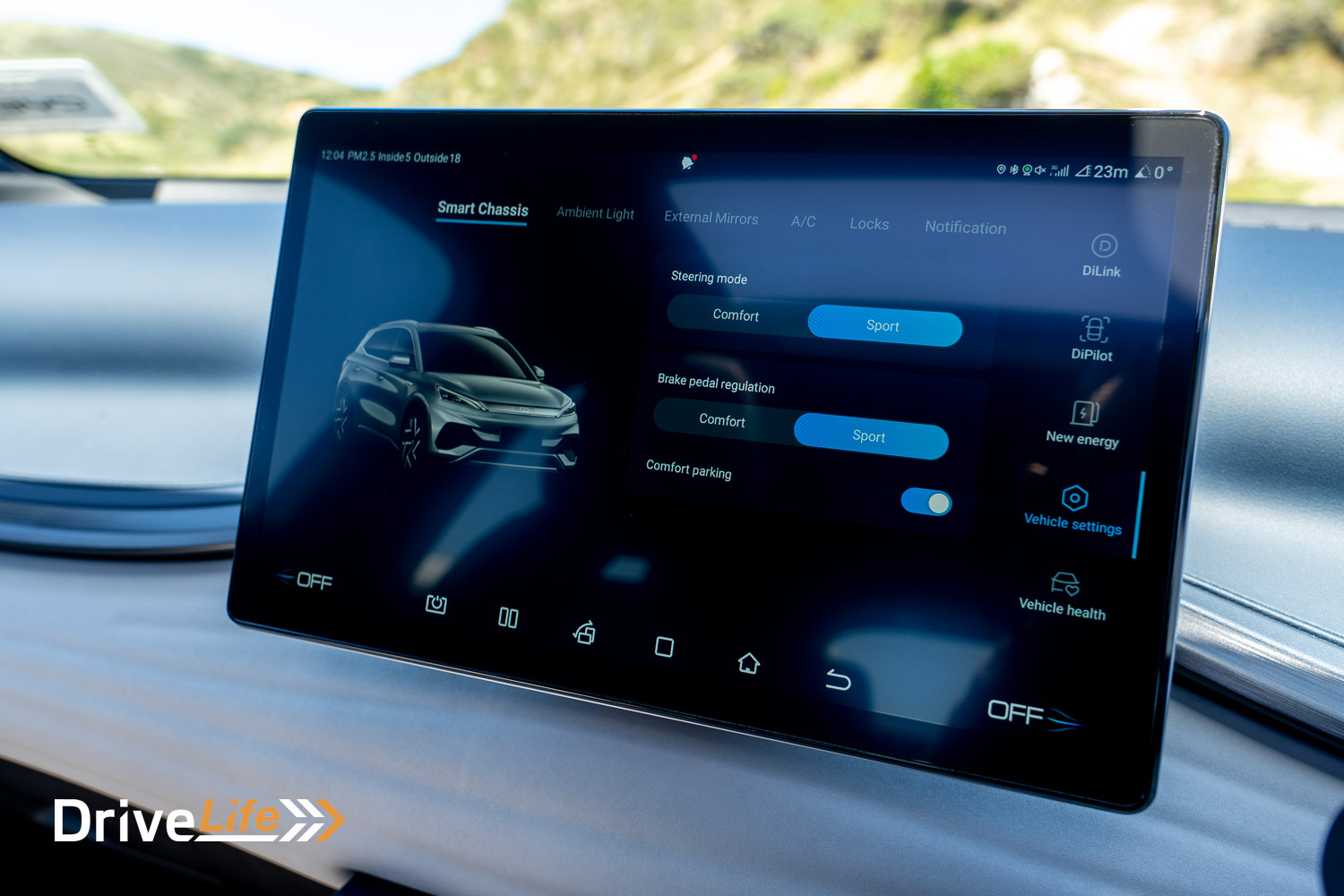
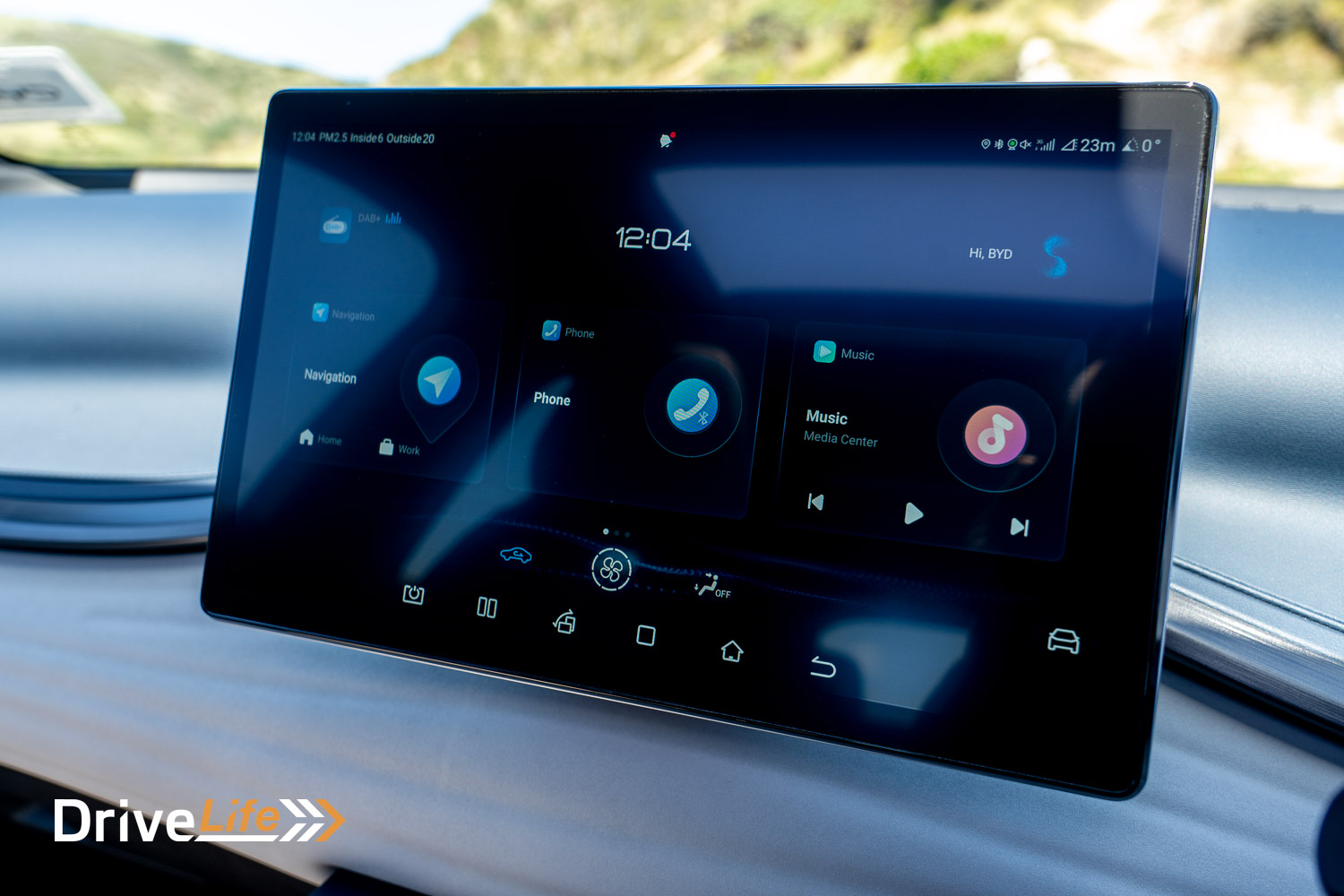
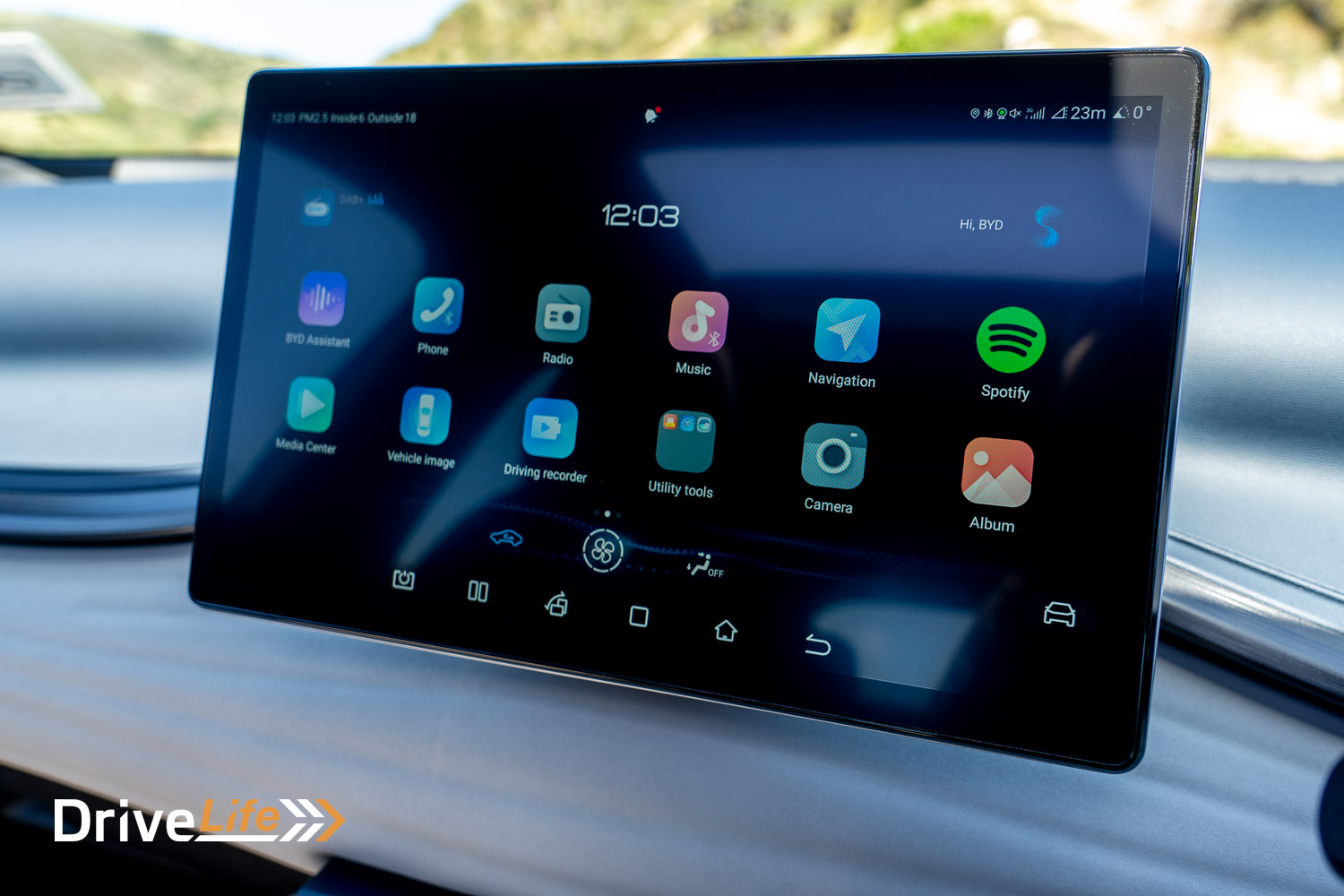
The reversing camera is high resolution too, and this makes it easy to pilot the car around Wellington’s tight streets and park it. So far, so good.
I like that all the windows are auto up/down, and you can simply say, “Hi BYD. Put all the windows down” and she bends to your command. I found this very handy on returning to the car on an almost summer’s day, to let out all the hot air. That voice control is not just for windows, she can do the usual things like change the AC settings, navigate, or open the sunshade (or sunroof). If you like, you can say “open the sunshade halfway” and she does it. Other cars have a similar feature, but with BYD going down the Tesla route of having no buttons across the dash, I made the most of voice activation during my time with the Atto 3. There were a few funny moments with the Atto 3’s voice system. With the sunroof open, I asked the car to close the sunshade, and she responded “I can only close it a bit much”.
While there are no buttons across the dashboard, there are some on the centre console. While the MG ZS EV has a rotary gear shifter, the Atto 3 has a normal-looking shifter, although still a little funkier than most other cars. It doesn’t take long to get used to it. Behind the shifter is the engine start/stop button, and like the Kia EV6 we reviewed recently, the Atto 3 has the start/stop button right there, handy for the driver. Most cars have you poking around under the dashboard for that button, so I appreciate it being in a perfect spot.
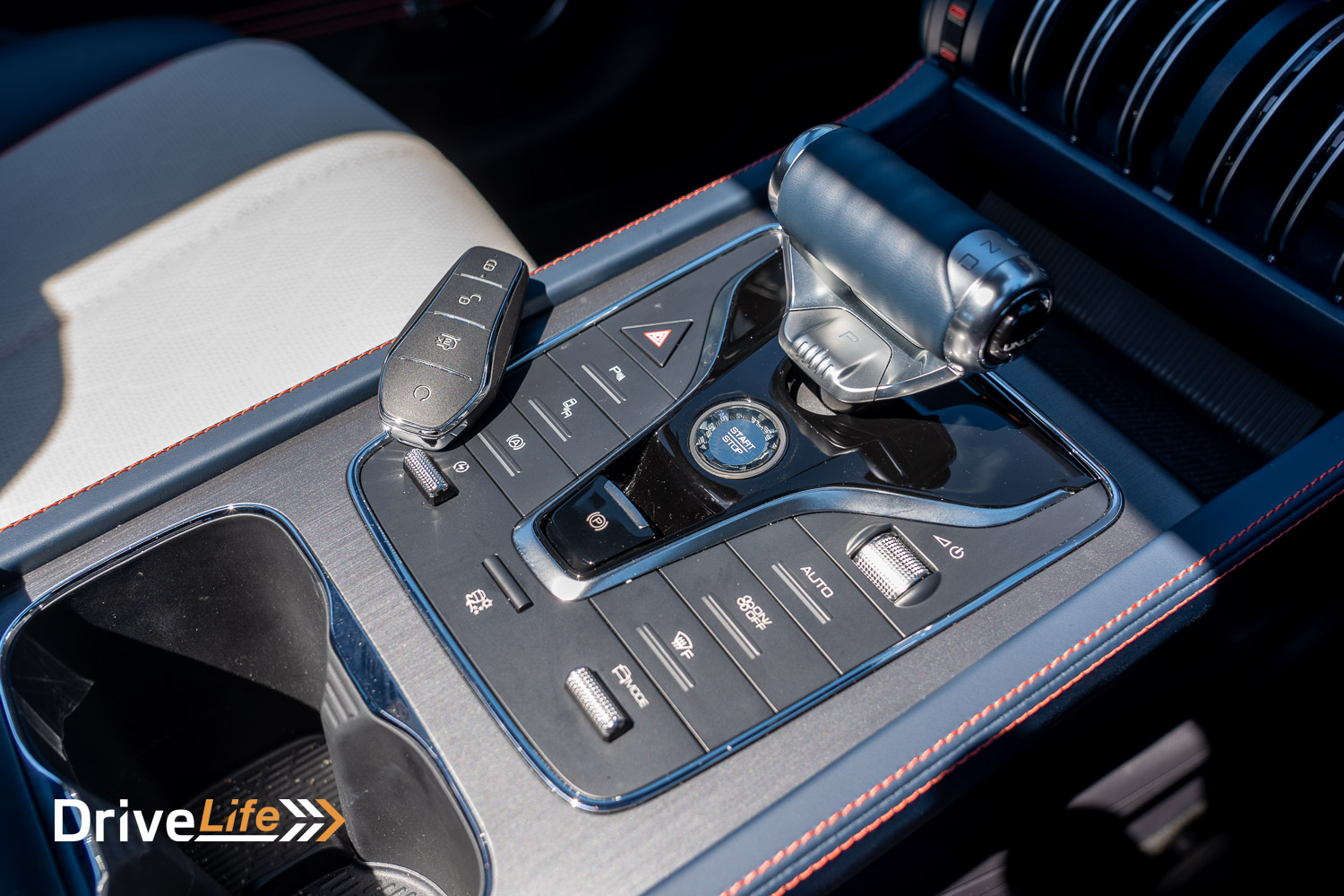
On the not-so-good front are the other buttons on the console. These control windscreen demist, AC on/off, AC auto/auto off, and then on the left side of the console are buttons for the brake auto hold, blind spot monitoring and parking sonar. The issue is the lights that show you if one of these items is on or off. The lights are orange, but under any sort of daylight they become invisible. It’s not a massive issue, but too often I found myself covering a button with my hand to try and see if the light was orange or not – not something you can do while driving.
At the rear of the centre console are two more buttons; automatic brake regeneration (regen) adjustment, and drive mode. Automatic brake regen comes in two flavours; Standard or High. Neither does much. For me, this was the weakest point of the Atto 3. Even with auto brake regen on High, the car will almost coast along, even on flat ground. It is automatic and speed-based, so on the motorway, if you come off the accelerator then more regen will be applied, but it’s mainly around towns and cities where you want it to work harder, to allow one-pedal driving if you want to. I left the Atto 3 on high brake regen the entire time of my testing. Of course, using the brake pedal will slow the car and apply regeneration, but one of the great features of driving an EV is to either be able to use one pedal only, or almost one pedal.
In front of the driver is a small dashboard that is fixed to the steering wheel cowl. This means the dashboard moves up and down with the wheel as you adjust it, always keeping it in the right place in front of the driver. It is tiny at 5”, but like the central screen, the resolution is excellent. The digital speedometer is on the small side, and the speed sign that shows for Traffic Sign Recognition (TSR) is even smaller.
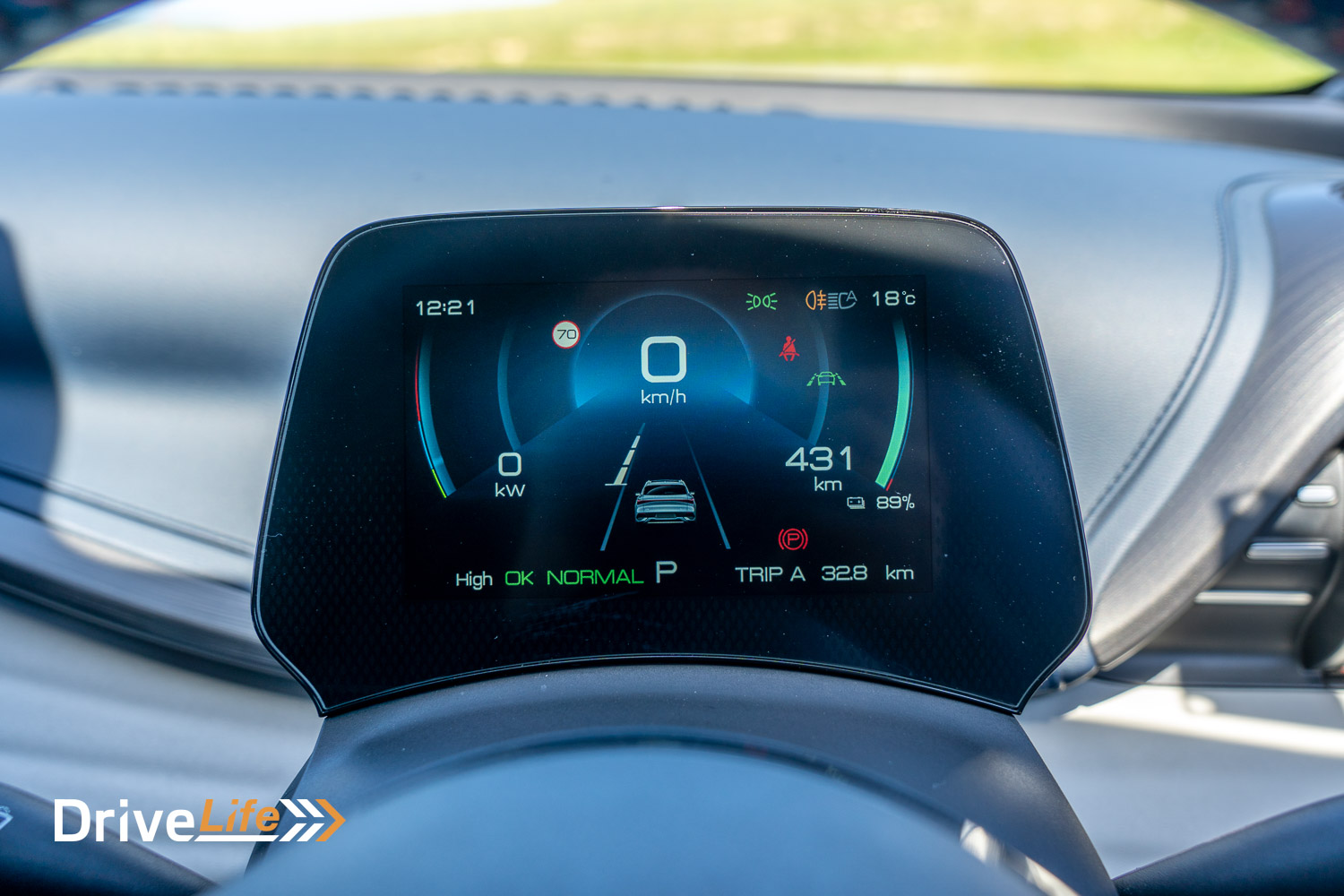
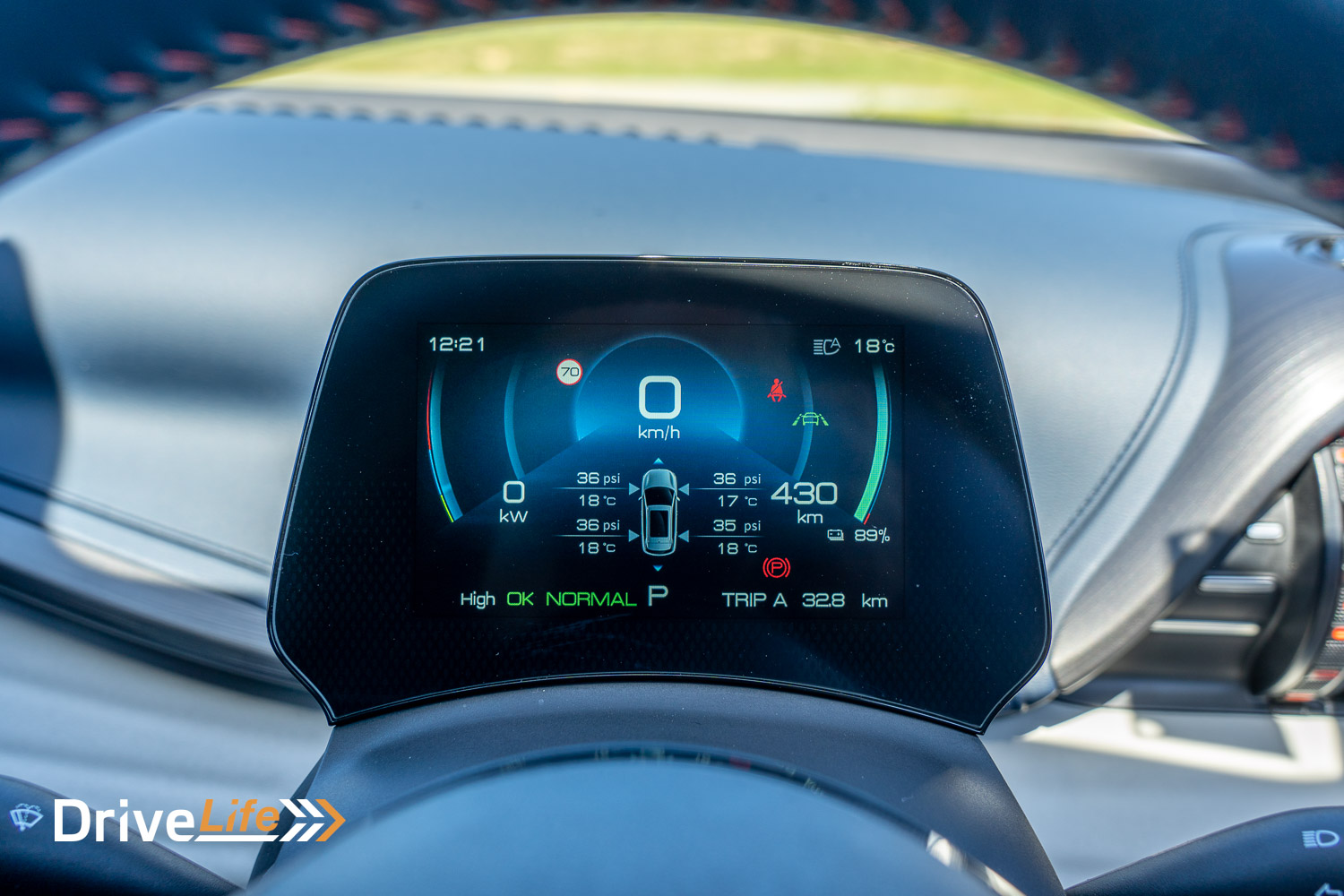
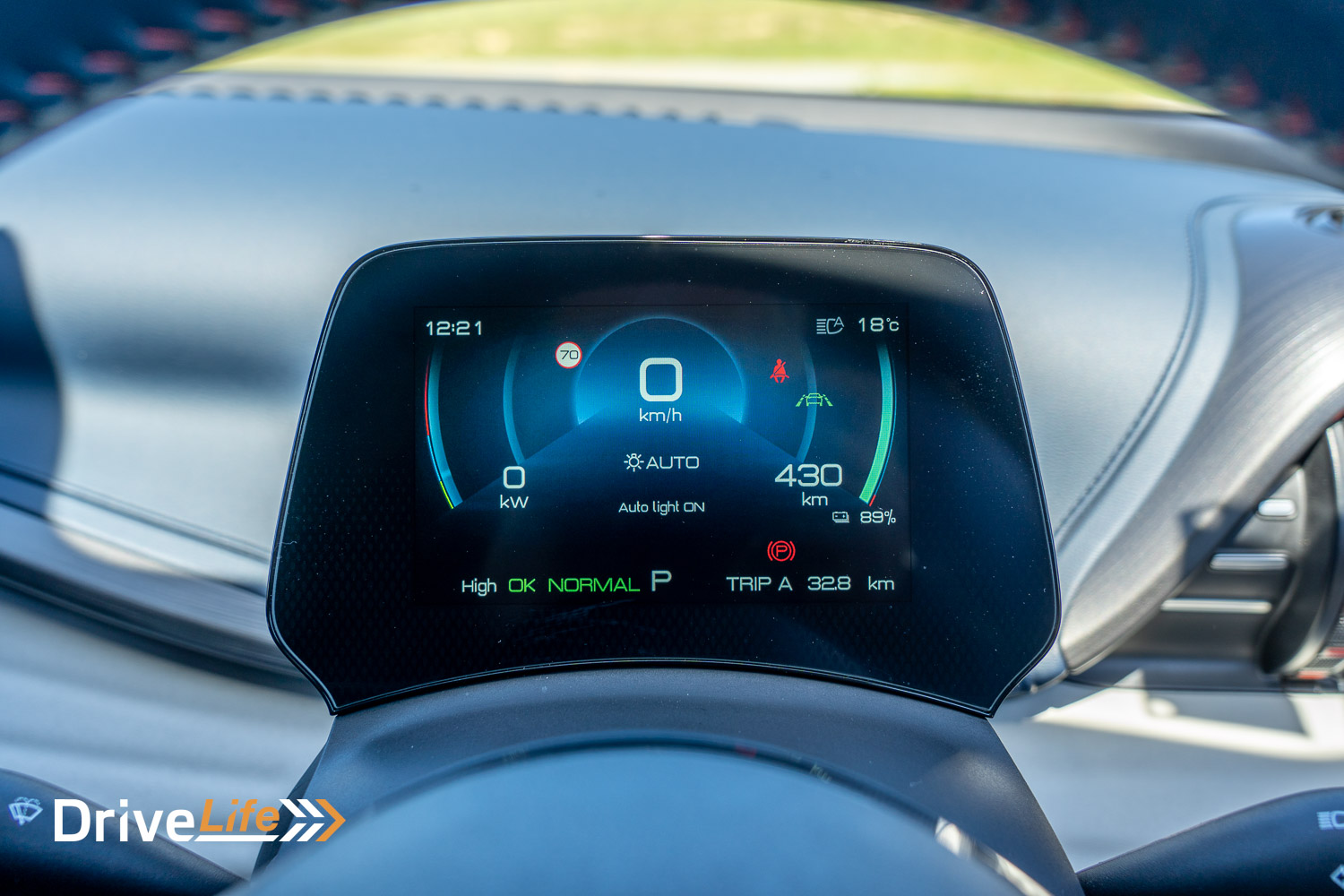
Still, you can set up the Atto 3 to verbally remind you if you are over the limit, and she’s not judgemental about it at all. There’s a basic trip computer included in the dashboard, and it was nice to see that as well as see what the tyre pressures are, you are also shown the temperature of each tyre if that sort of thing turns you on.
When using SatNav, you won’t see any directions on the driver’s dashboard, so you’ll need to rely on the centre screen and the voice prompts. That centre screen at 12.8” is so big, using it for navigation is a breeze. As mentioned, it’s got that party trick of rotating to be landscape or portrait, but if you wear sunglasses that are polarising, the screen image disappears when it’s in portrait mode.
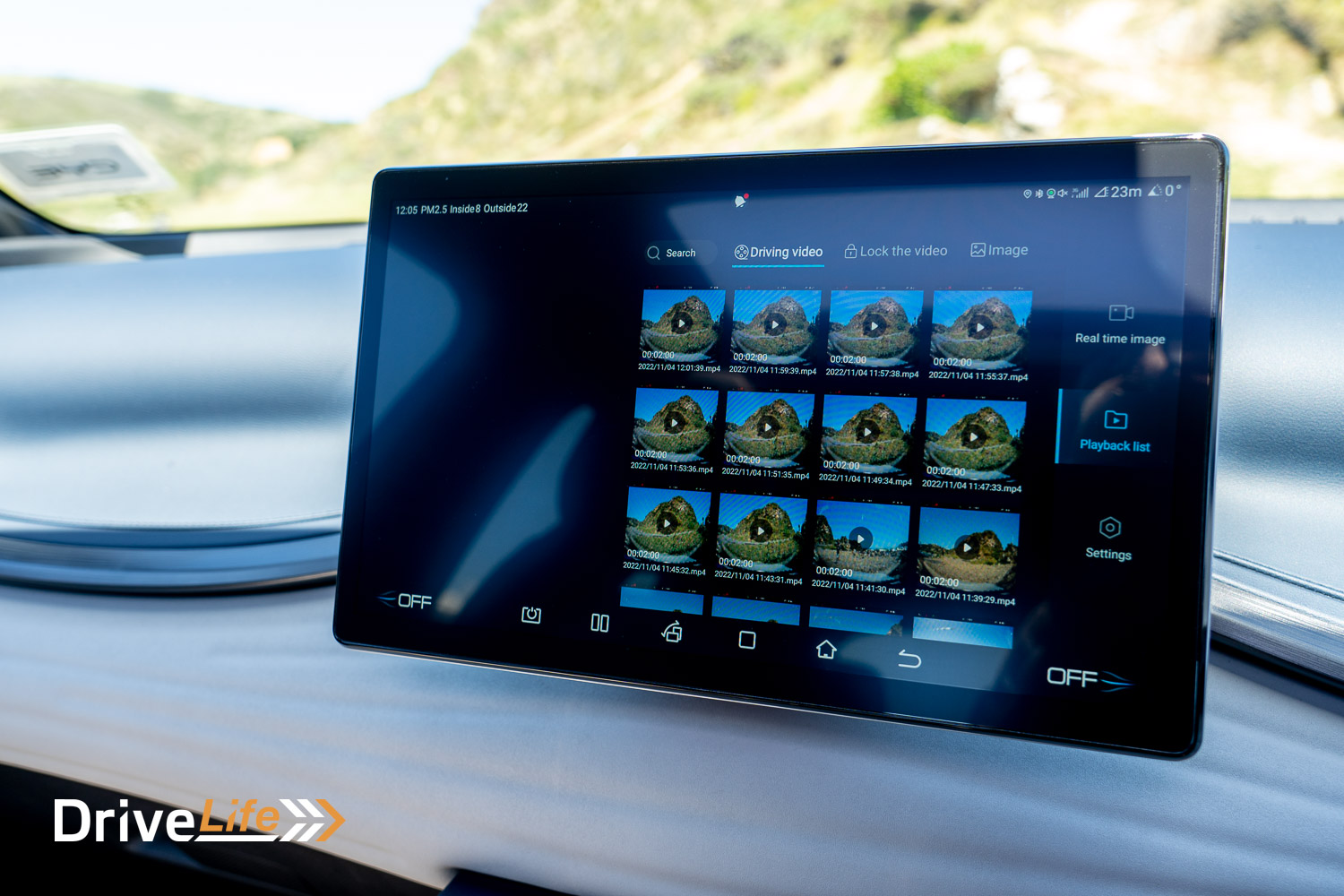
The whole infotainment system is 90% perfect. It’s quick between screens, and I appreciated that the Atto 3 has a built-in digital video recording (DVR) system that captures the traffic movement in front of the car in 1, 2 or 5-minute clips (you select the time period). I know, Tesla does this, but so few other brands do and yet most of them have cameras at the front of the car these days. I did have some technical problems with the infotainment system, mainly around the Bluetooth connection and music on Bluetooth. The Atto 3 has a home screen, which is great, and a segment of this allows some control over streaming music but it never worked. I always had to go into Media fully to be able to play music, and even then at times it would not connect or would take minutes to reconnect. One day, Bluetooth audio decided it would stop working for a few hours, reminding me instantly of the Tesla Model 3 which did exactly the same thing.
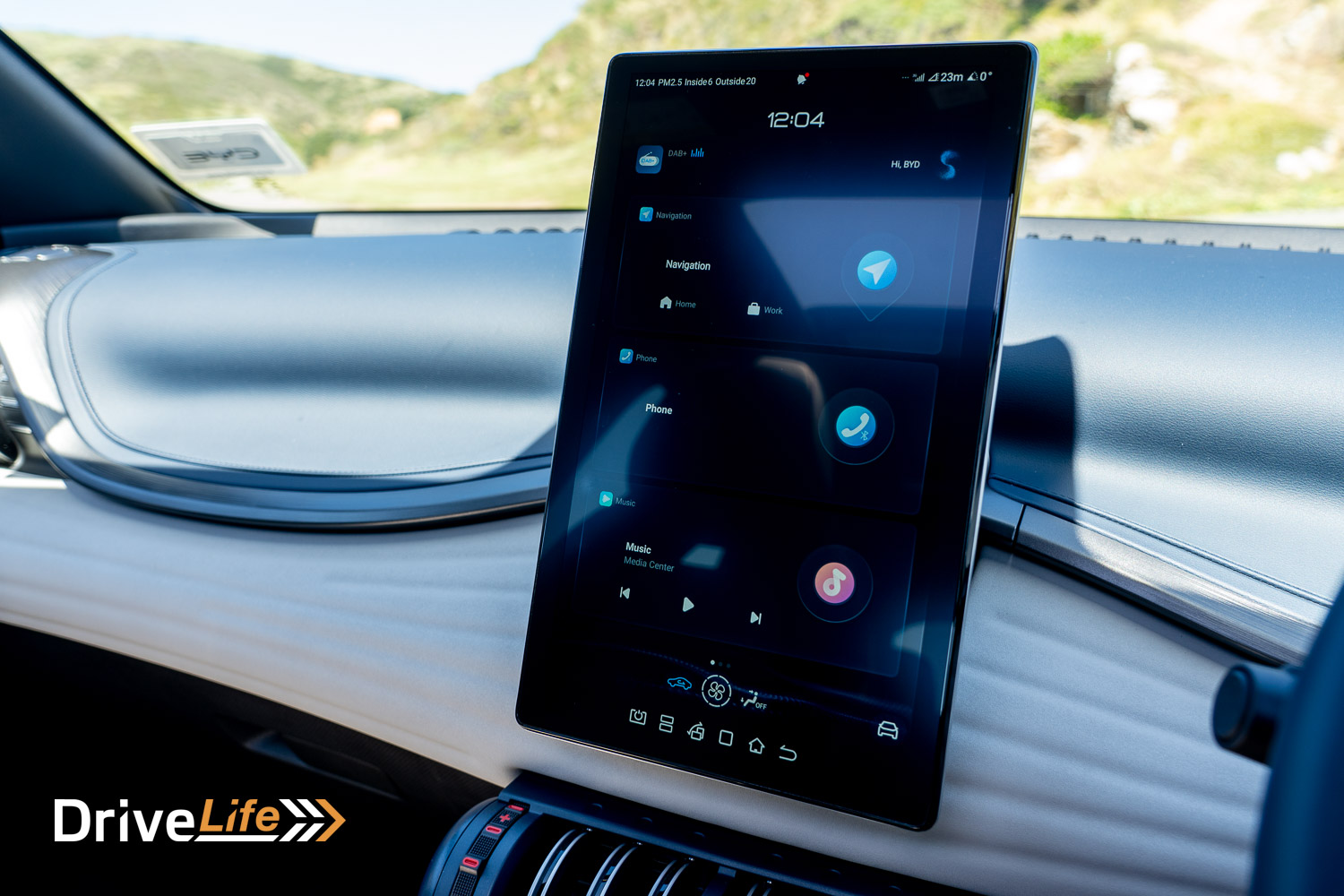
In driving the Atto 3, overall it’s a very good experience with a smooth and refined ride to be had. The weight of the batteries down low helps keep the car planted on the motorway, and this is one of the Atto 3’s strengths, it simply glides along the motorway with little fuss, little wind or road noise, and almost no tyre noise. The Atto 3 is fitted with Batman tyres (I’m not joking) and they are excellent, as far as tyre noise goes. Far better than the Michelin Primacy eco tyres we saw (or heard) recently on the MG ZS EV.
Performance is excellent too, and even with 5 people on board, the car performs well. That 310Nm of torque really helps here, moving the car easily along the motorway or city streets. Performance off the mark is sprightly, and tyre chirp is often heard – even accelerating hard from 50km/h will sometimes see a bit of tyre squeal kick in.
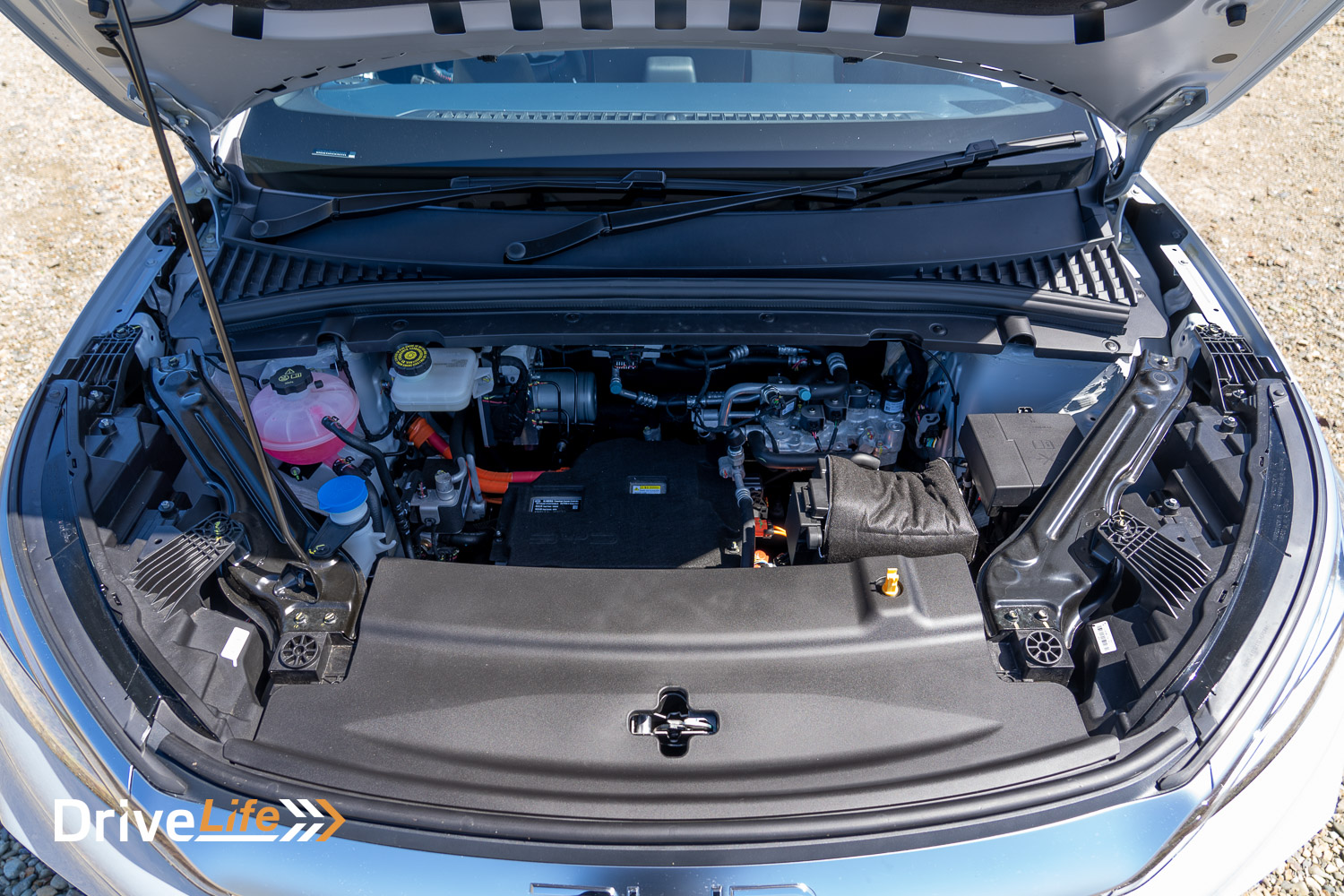
Concerns about a very quiet car and speeding are helped by an over-speed reminder; on some cars, these are just downright annoying, but on the Atto 3, it’s 3 gentle beeps to remind you to check your speed. These are quite handy, as even though the Atto 3 has Traffic Sign Recognition (TSR), it’s a little inconsistent and will sometimes give you the wrong speed limit.
There are a few other niggles on that Daily Drive, along with TSR. The car has Forward Collision Avoidance (FCA) and that’s excellent, but regularly there are fake alerts that you are about to crash. While Wellington’s streets are a mean test of FCA, the Atto 3 would alert me to an impending crash, in places where other test cars would not. The Atto 3 has brake auto-hold, something that I use all the time. I appreciate that the car remembers that you had it on and turns it back on when you get back to the car, but there were times that, even though the light was on, auto hold simply did not work for the first ten minutes of my drive.
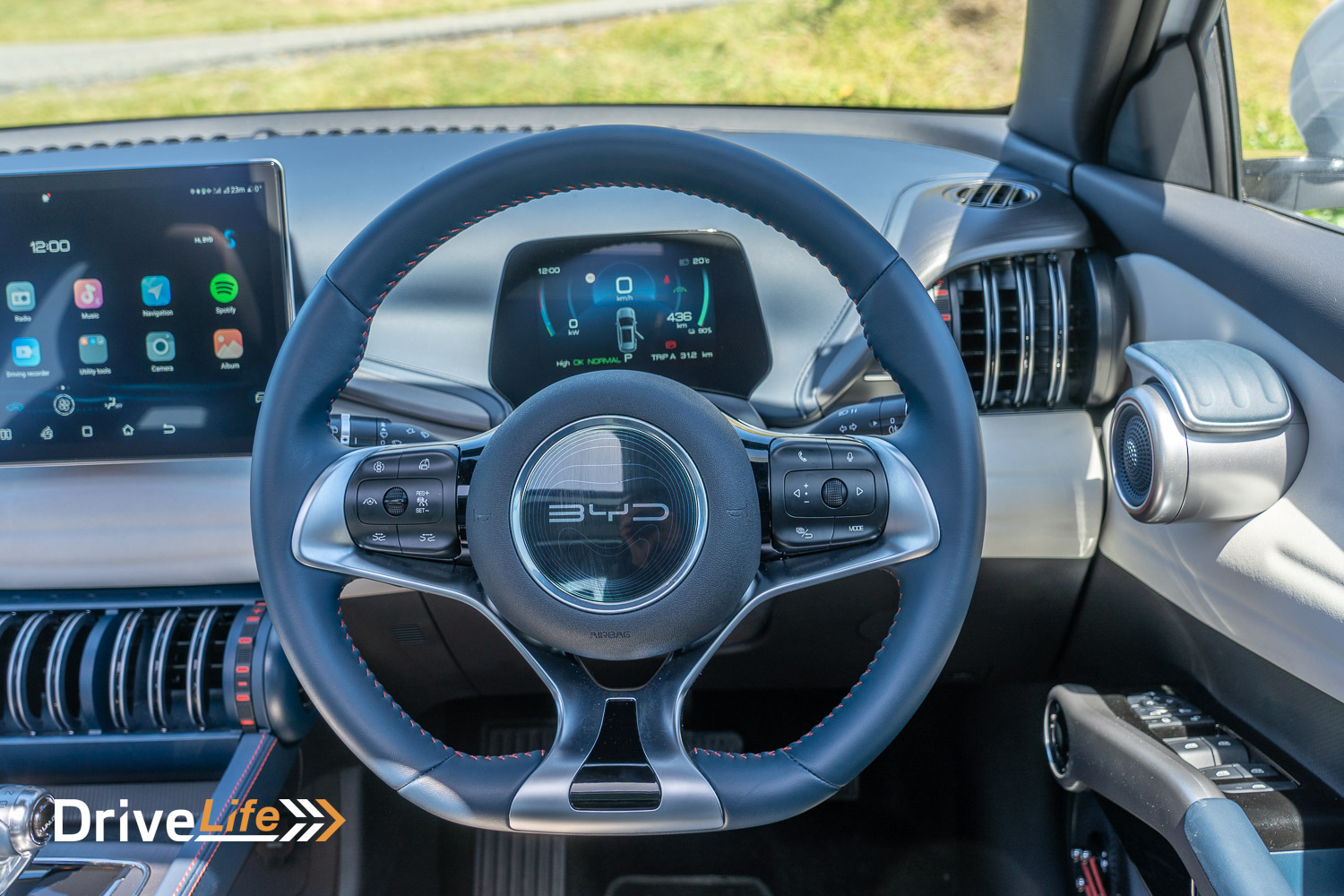
Another addition to the Atto 3’s stable of features is an NFC card for entry. Instead of taking the bulky key in your pocket, you can stick the NFC card in your wallet or purse. It’s the same size as a normal credit card. There’s an NFC reader on the driver’s door mirror, so you wave the card over this and the doors unlock. Then simply get in and drive – no need for the key. Again, possibly a copy of the same feature in a Tesla. There are a few drawbacks of the NFC card; if you sit in the car too long and don’t start it, the system times out and you have to wave the card over the NFC reader again. I had to do this, in the rain. Also, there’s no NFC reader on the passenger mirror, so if you are on that side of the car and want to lock it, you have to go to the driver’s side and wave the NFC card or press the button on the driver’s door handle to lock the car. This could be easily fixed with a lock/unlock button on the passenger’s door, but the Atto 3 doesn’t have one.
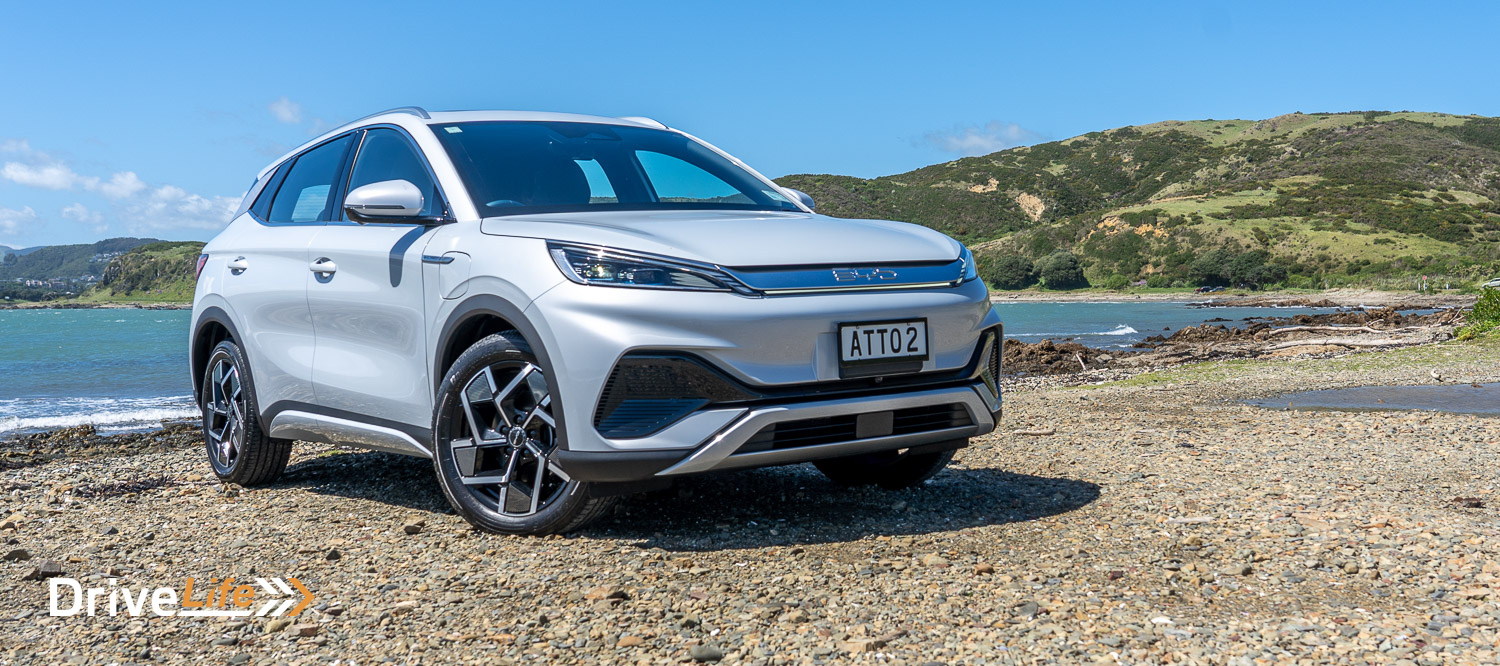
So how did the car go on range? While its WLTP rating is 420km, I got down to 2% left and managed to achieve 335km. We’ve said it before; Wellington’s hills are a killer for EVs, and it’s extremely rare that we will achieve a car’s WLTP rating. The same can be said for petrol or diesel cars we test. On those last kilometres of battery charge, I actually got the car down to 1% remaining, but it went into limp mode and there was no way it was going to make it up the next big hill, so I did a u-turn and cruised back down at about 30km/h to a Z station to put some charge in. Most buyers would not get their cars down this low on purpose, but for me, it was no real drama. I charged for 6.5 minutes and got the car to 10% (46km) charge – plenty enough to get home. If I was away from home at that time, it would have taken 1.5 hours to get the car to 80% charge on that charger at the Z station, but it is only a 25kWh charger when most fast chargers are 50kWh.
We covered a total of 800kms in the 2022 BYD Atto 3, and the car returned 16.7kWh/100km in energy economy, and that’s very close to BYD’s stated figure of 16.0. This is a lot better than the 19.0kWh/100km we got from the MG ZS EV, but the 1,000km we did in the MG did include an Auckland-Wellington drive of 600km. Neither is close to the 14.7kWh/100km we got out of the Hyundai Kona EV, but that car is $10,000 more expensive than the Atto 3 Extended.
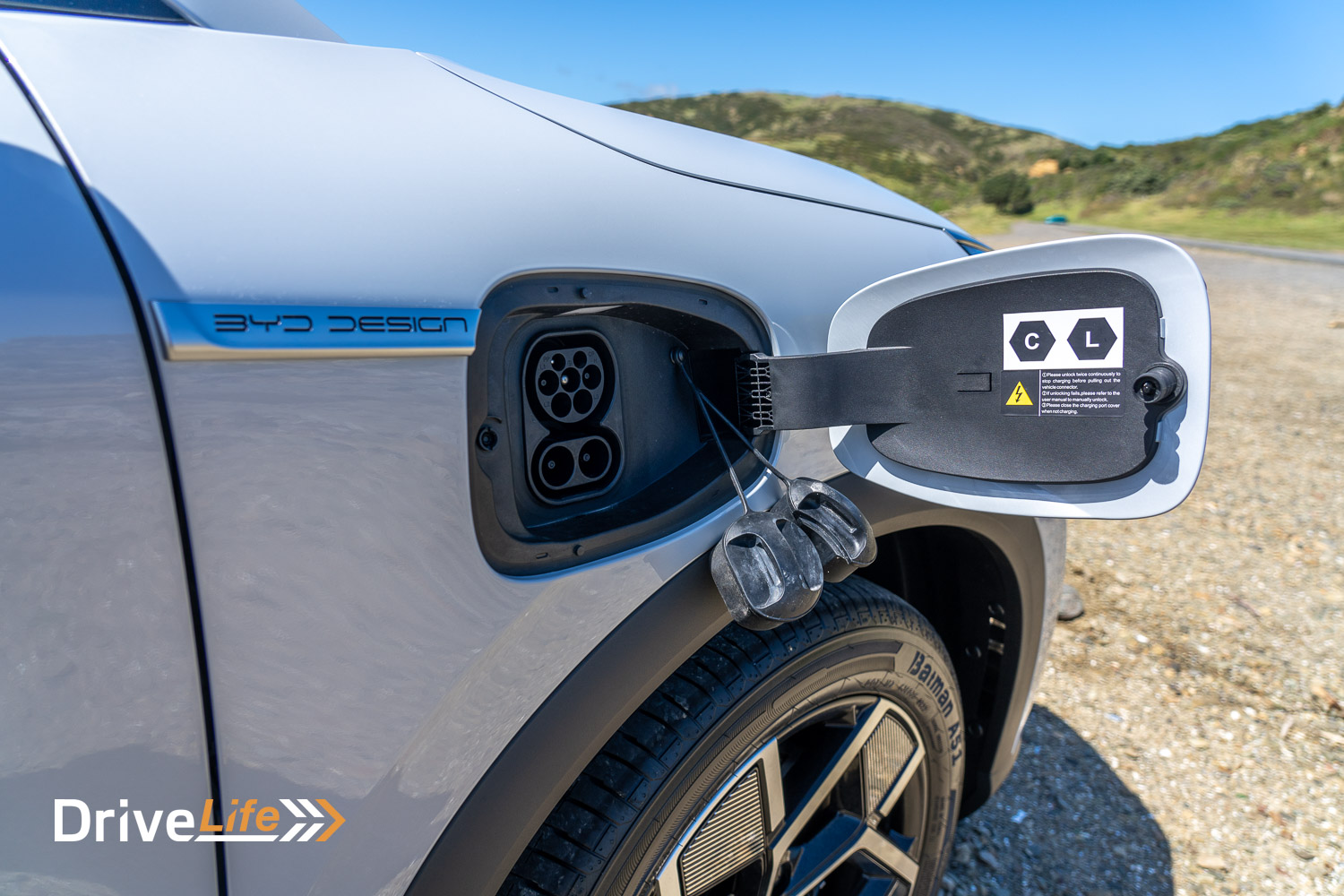
ALISTAIR’S POINT OF VIEW
I have mixed feelings on newcomers, particularly so in the car industry.
On the one hand, a newcomer to the market can prompt a radical rethink of the way the industry behaves and delivers its products. Tesla is a prime example of this. On the other hand, newcomers often do not have the efficiencies of a mature business, resulting in reliability headaches for early adopters. Tesla, again, is a prime example.
So, what about BYD? An electric vehicle manufacturer from China, which I can assure you nobody in New Zealand had heard of before the Atto 3. Well, BYD is an acronym for “Build Your Dreams”, which is proudly emblazoned across the back of the Atto 3. BYD is also a major manufacturing conglomerate in China, which has been making all things from buses to solar panels.
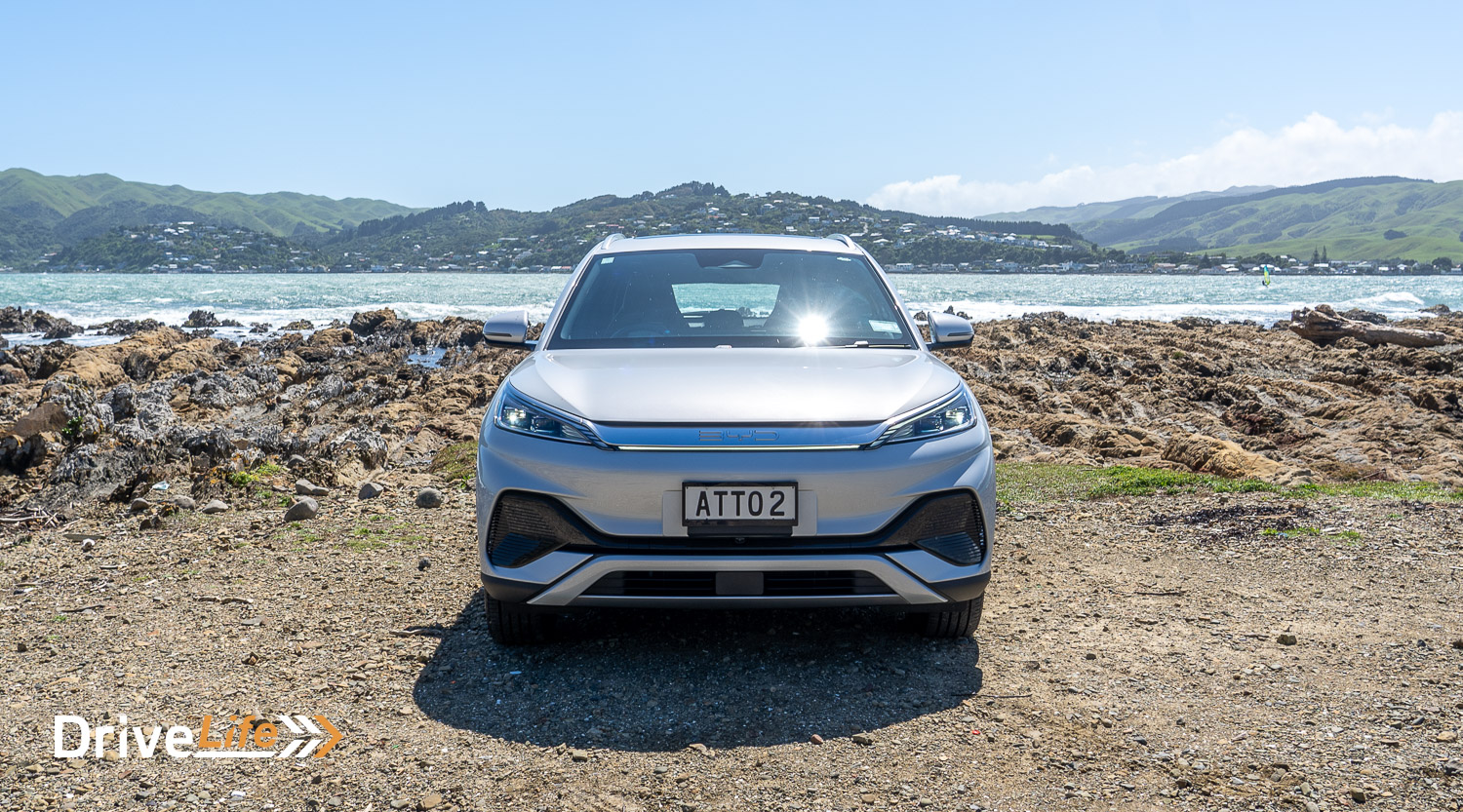
The Atto 3 is BYD’s first export to Australasian markets. It’s very topical, being an electric mid-size SUV with decent range. It’s also very reasonably priced with the Clean Car rebate applied.
However, being a new vehicle from an unestablished brand in an emerging industry, I nearly dismissed it outright. Honestly, I was expecting the Atto 3 to be awful.
But man, I was totally wrong.
On the inside, this BYD emulates the Tesla approach only with more funk. Stuck on the dash is a massive command tablet, which has a rotating axis (unlike a Tesla). The software on it is responsive, intuitive and the screen is high-res. The interior feels light and airy, thanks to the large panoramic sunroof, and it accompanies a white, blue and red interior colour palette. There are also some novel design elements, including the rounded vents, the strings across the speaker housing, and those quirky door handles surrounding the door tweeters. It’s all reasonably well assembled too.
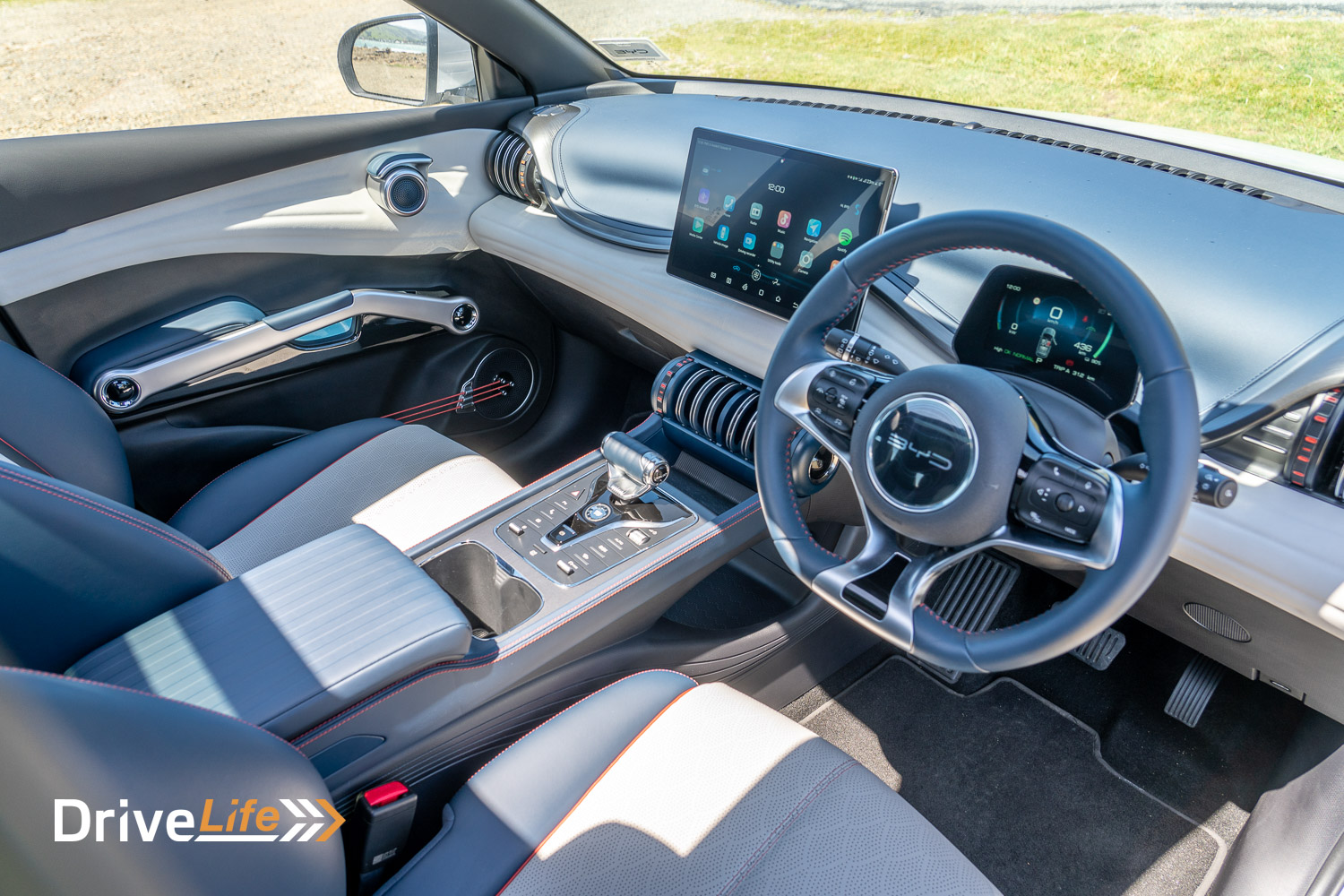
From behind the wheel, you have all the usual EV perks. It’s smooth, quiet and you have good off-the-line performance. The ride quality is also decent, but don’t drive it too fast in the twisties, because it’s about as taut as a wet piece of paper.
The bad bits? Fred’s covered many of them. Most of them are software related, and there are a few corners cut from a build perspective (such as the keyless entry only being on the drivers-side). There’s a bit more wind noise than you’d expect around the A-pillar at highway speeds, and the exterior design isn’t anything particularly unique. I also have my reservations about it being a new brand in New Zealand, but BYD does seemingly cover this with a good warranty.
Despite all this, the BYD Atto 3 is a genuinely impressive vehicle. It’s one of the better EVs available under the $80,000 mark, and in my view, it’s better than its closest competitor, the MG ZS EV. If you are shopping for EVs within the rebate price range, the Atto 3 should definitely sit high on your list. Just be sure to pry off that stupid badge, okay?
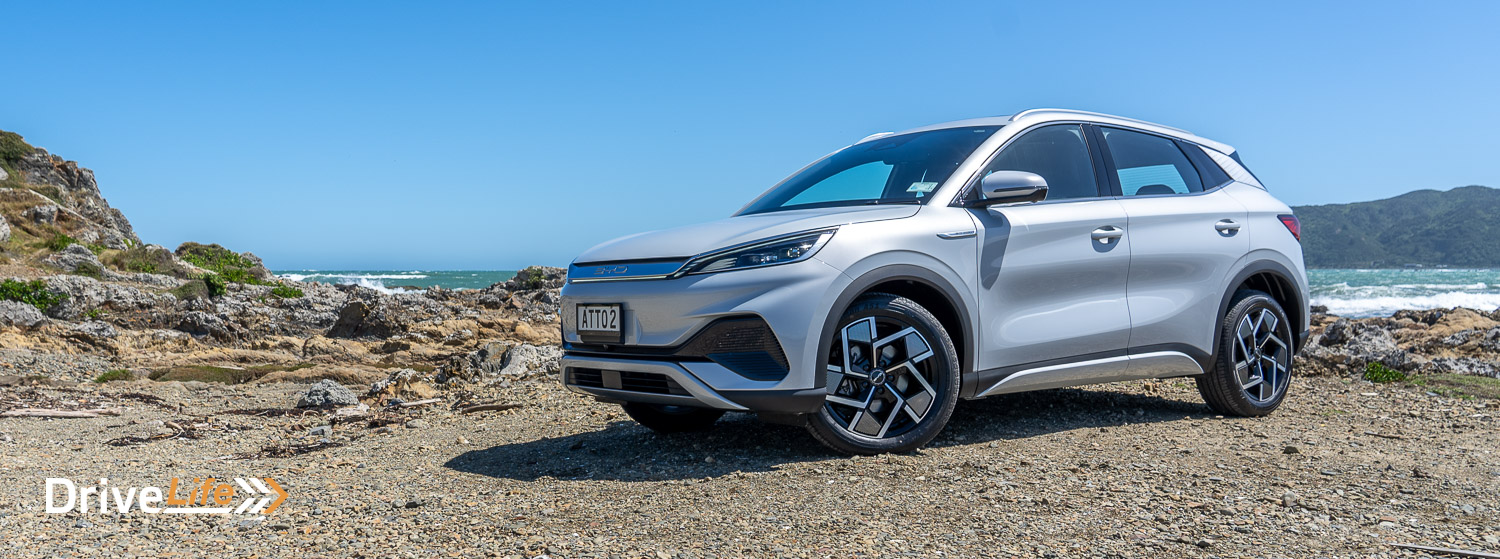
2022 BYD Atto 3 Extended 60kWh – Specifications
| Vehicle Type | 5-door, front-wheel-drive, small-medium electric SUV |
| Starting Price | $59,990 |
| Price as Tested | $59,990 |
| Engine | Single electric |
| Power, Torque kW/Nm | 150/310 |
| Transmission | – |
| Spare Wheel | Tyre Repair Kit |
| Kerb Weight, Kg | 1,750 |
| Length x Width x Height mm | 4455x1875x1615 |
| Boot Space / Cargo Capacity, Litres (seats up/seats down) | 440/1,340 |
| Energy Economy, kWh/100km | Advertised Spec – Combined – 16.0 Real-World Test – Combined – 16.7 Low Usage: 6-10 / Medium Usage 11-19 / High Usage 19+ |
| Towing Capacity Kg, unbraked/braked | NA/750 |
| Turning circle metres | 11.0 Small: 6-10m / Medium 10-12m / Large 12m+ |
| Warranty | 6 Year 150,000km Warranty 8 Years of Roadside Assitance 8 Year/160,000km EV Battery Warranty |
| Safety information | ANCAP Rating – 5 stars – Link Rightcar.govt.nz – 5 Stars – ATTO2 |
Have you enjoyed this review? Be sure to join our monthly email newsletter list so you don’t miss a single car review!


